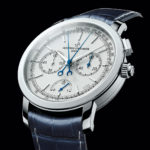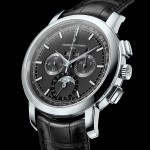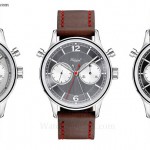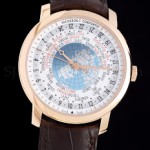In-Depth: Vacheron Constantin Traditionnelle Split-Seconds Chronograph ‘Collection Excellence Platine’
Spectacular.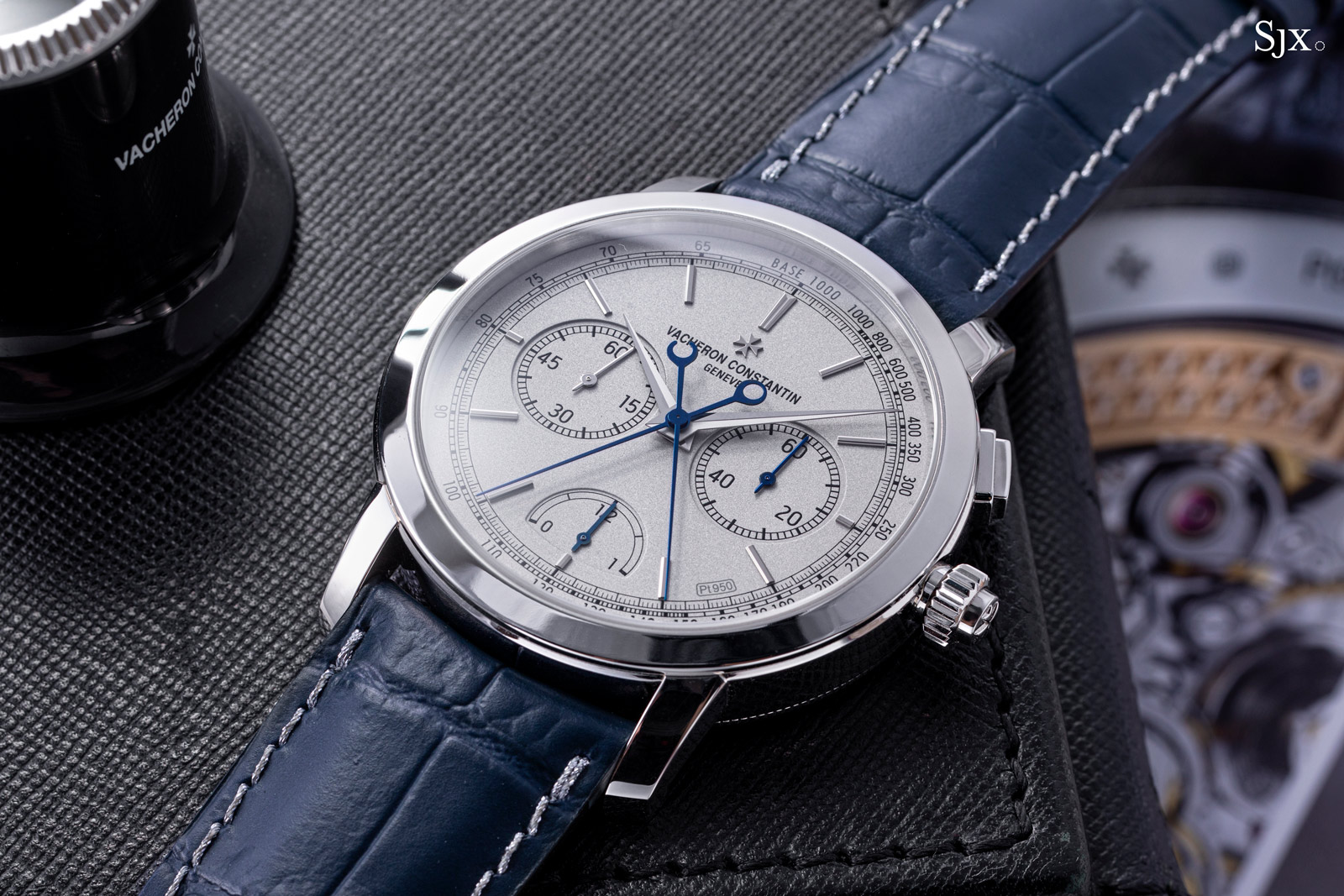
When Vacheron Constantin celebrated its 260th anniversary in 2015 with the Harmony collection of cushion-shaped watches, the standout was easily the split-seconds chronograph. Seemingly ordinary on its face, the Harmony split-seconds was powered by the cal. 3500, an all-new rattrapante chronograph calibre with a novel automatic winding mechanism.
The movement was gorgeous, but disappeared from the catalogue – until last year. The cal. 3500 made its comeback with the Traditionnelle Split-Seconds Chronograph Ultra-Thin Collection Excellence Platine.
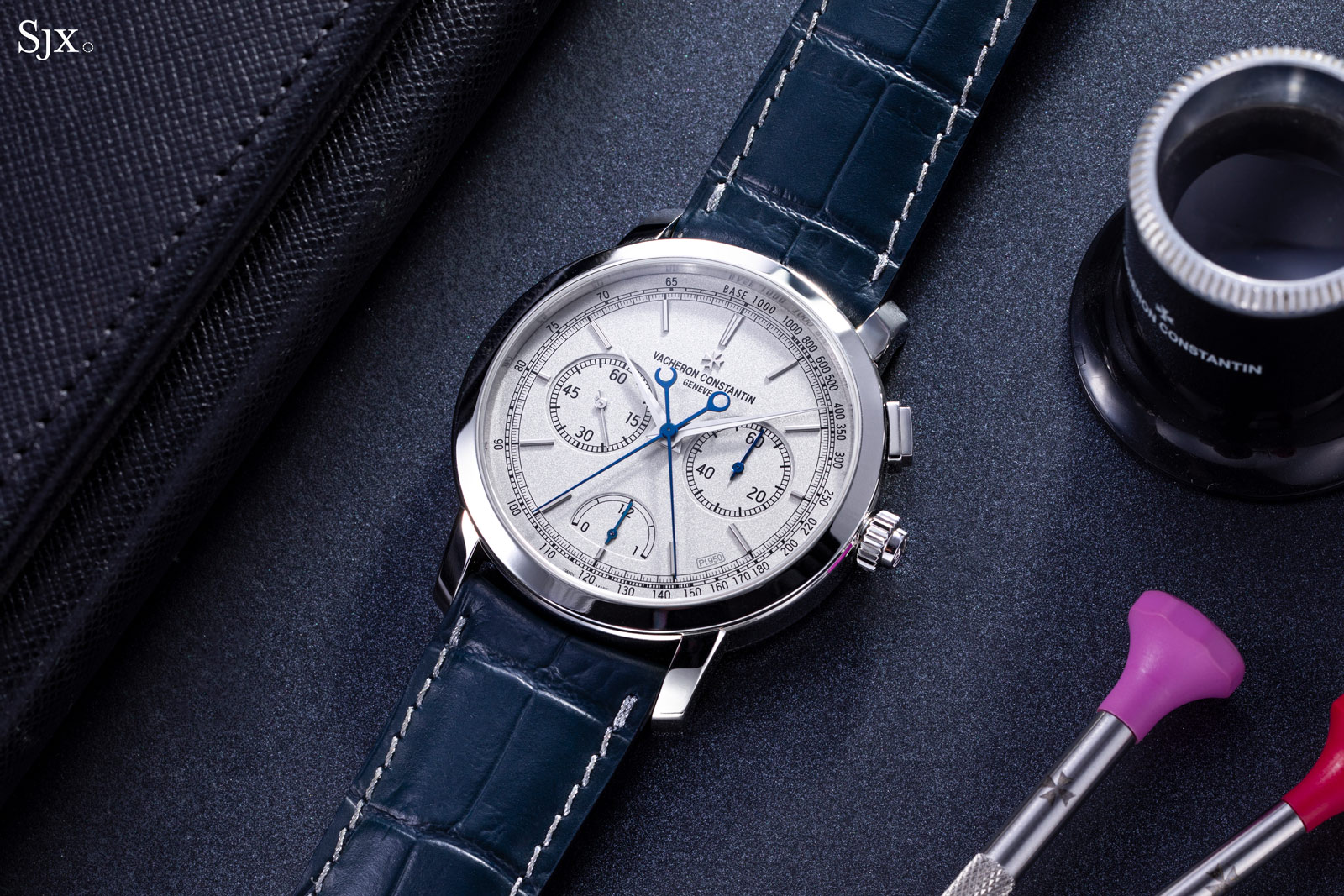
Like the other Collection Excellence Platine (CEP) watches, the Traditionnelle split-seconds is a limited edition – only 15 pieces in fact – that utilises platinum generously throughout the watch, but it is unique as there is no standard production equivalent in the catalogue. In short, it is a special watch.
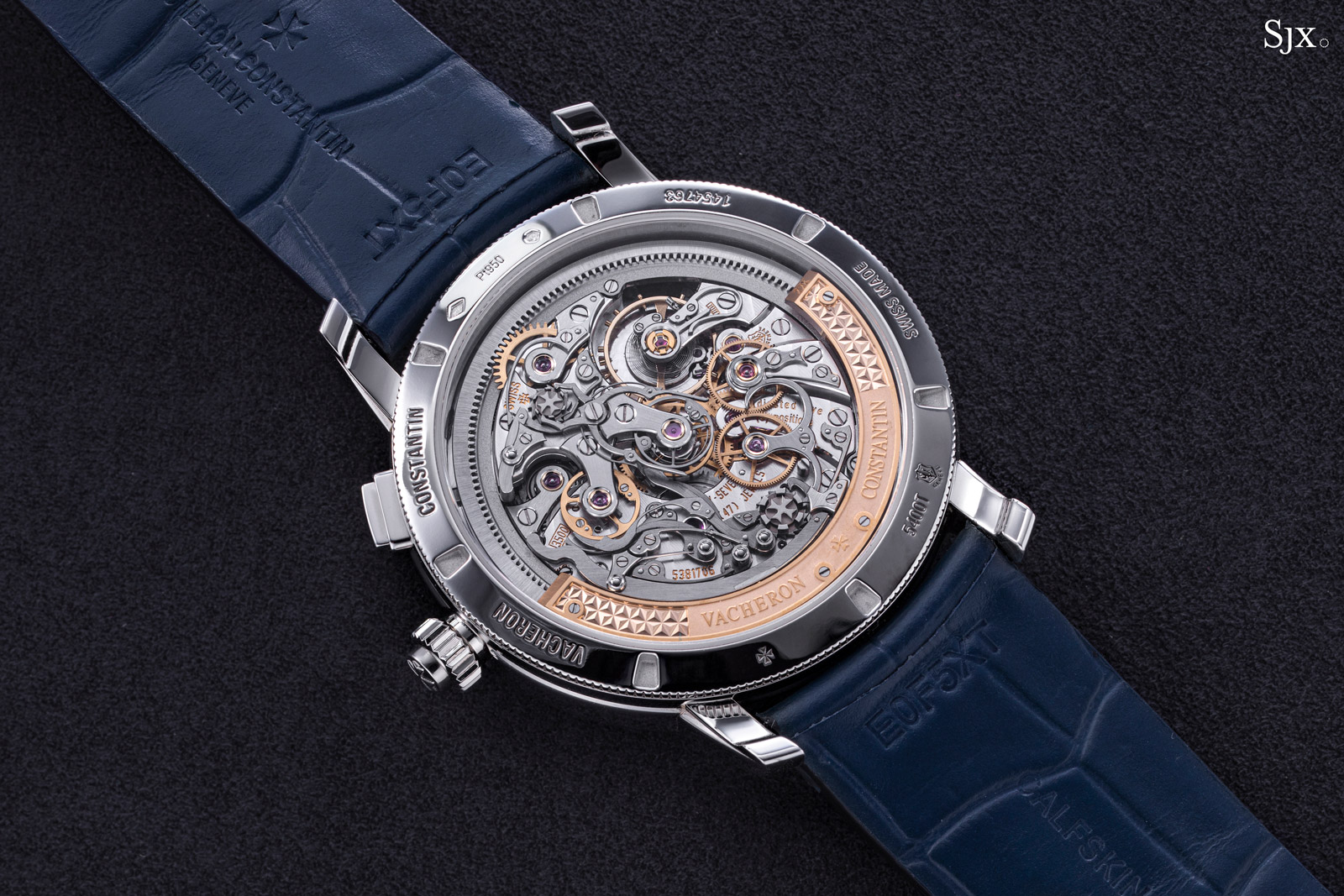
The cal. 3500 with its intricate chronograph mechanism and novel peripheral rotor
Initial thoughts
On its face, the Traditionnelle split-seconds is an elegant watch with a restrained, almost simple style. Its proportions are wide and slim, creating a graceful profile. The thinness exaggerates the case diameter slightly, so it does seem a bit wider than it is, especially with the longish lugs.
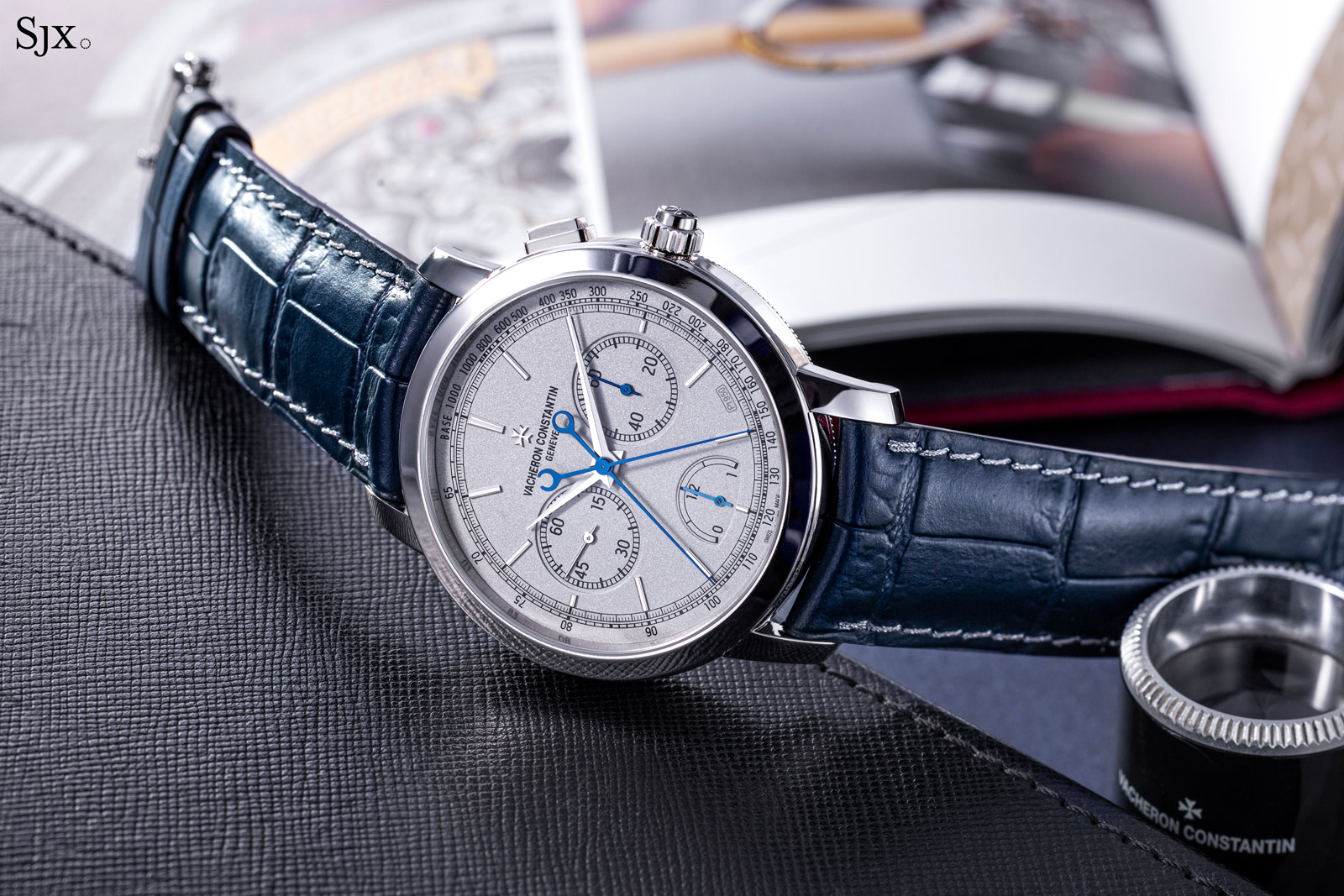
In typical CEP style, the dial is nearly monochromatic, rendered in grey and silver, with the only colour coming from the indicator hands for the chronograph and power reserve. It’s a simple combination, but a good one.
The platinum hallmark on the dial is sometimes criticised for being obvious. While that may be the case in photos it isn’t that apparent in the metal. And to me it’s an attractive detail – obvious enough to make a point but not that obvious that it becomes a key element of the dial.
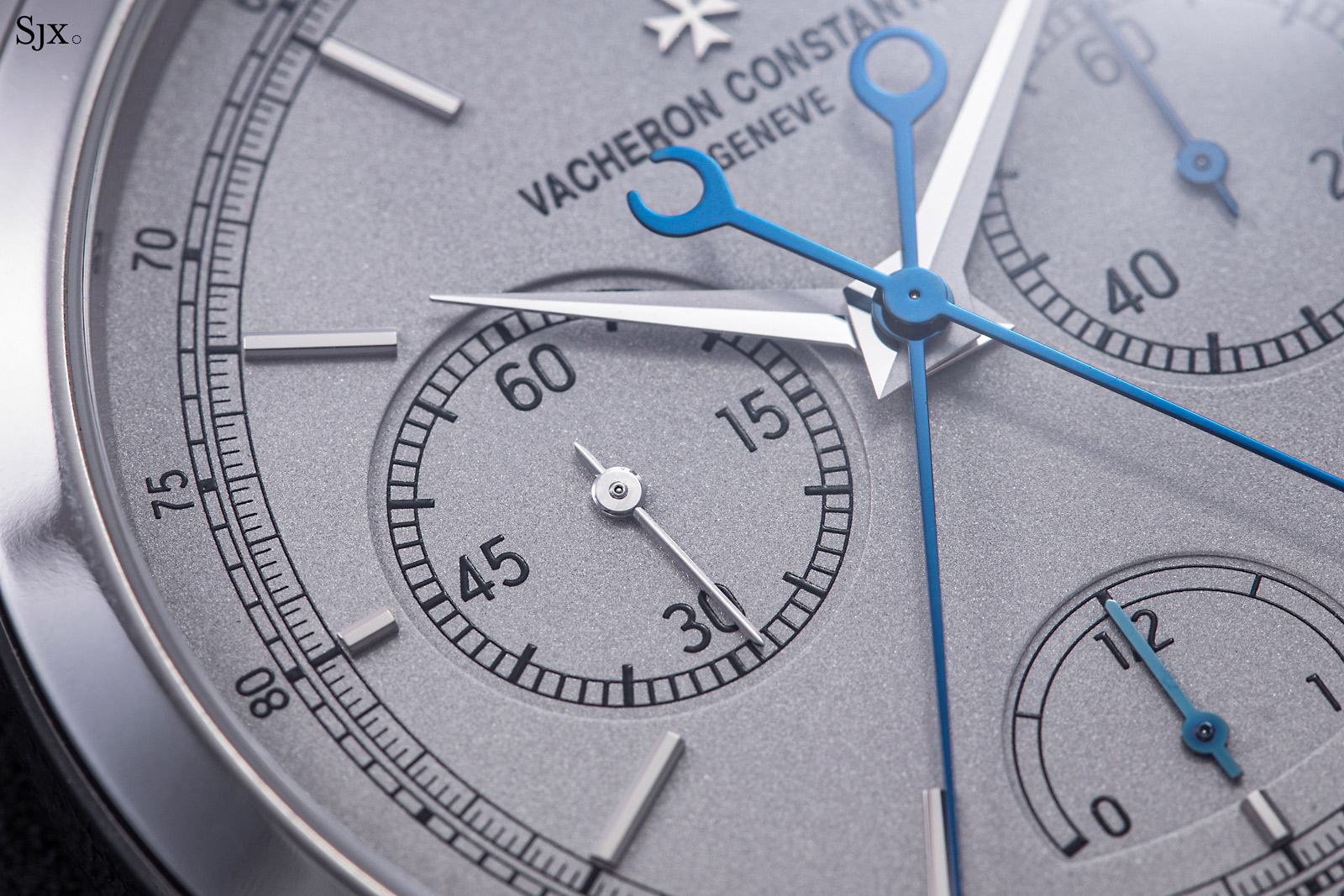
The sandblasted platinum dial
If I could tweak the dial I would alter the font for the numerals on the registers, scale, and tachymeter in favour of typography that’s a bit more old school. And I wish the twin seconds hands were more rounded, though I am certain their flatness is a matter of weight.
Still, the Traditionnelle split-seconds is a handsome watch. And it is certainly more appealing than the Harmony split-seconds that had the same movement. The Harmony tried a bit too hard to resemble a 1920s wristwatch, while the Traditionnelle is straightforward in style.
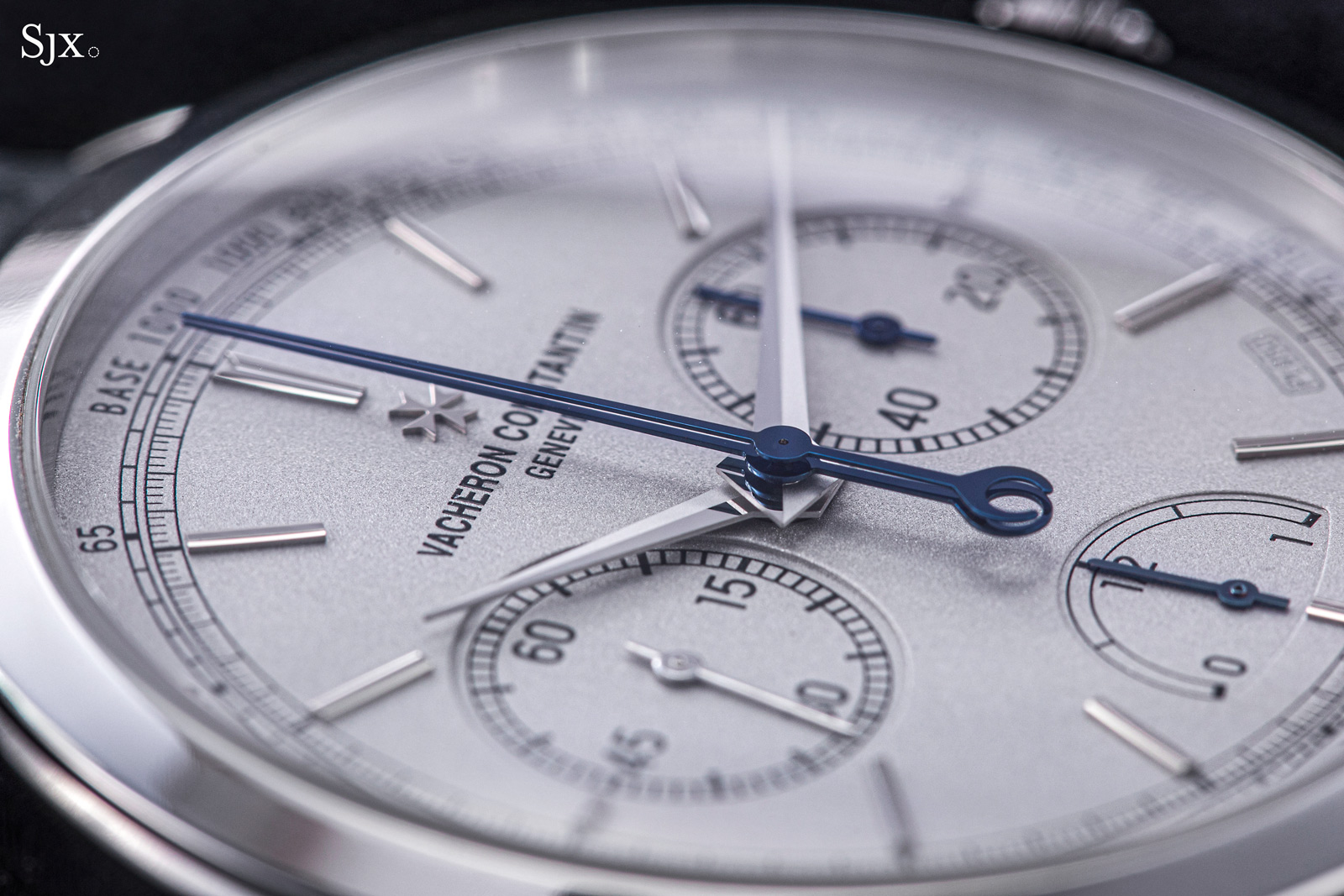
Both seconds hands are blued steel, while the hour and minute hands are white gold
Though the Traditionnelle split-seconds might be a CEP edition, but its best feature isn’t the platinum inside and out, but it is the cal. 3500 within.
The movement is brilliant in style and substance, and also a record holder: it’s the thinnest split-seconds chronograph movement for a wristwatch ever. But it is outstanding for more than just its height.
For one, it is thin but still retains the beauty of a traditionally constructed rattrapante mechanism, having all of the slender levers and fine wheels that characterise the best of such movements. And it is also automatic, a feature that takes nothing away from its aesthetics because of the novel peripheral winding mechanism.
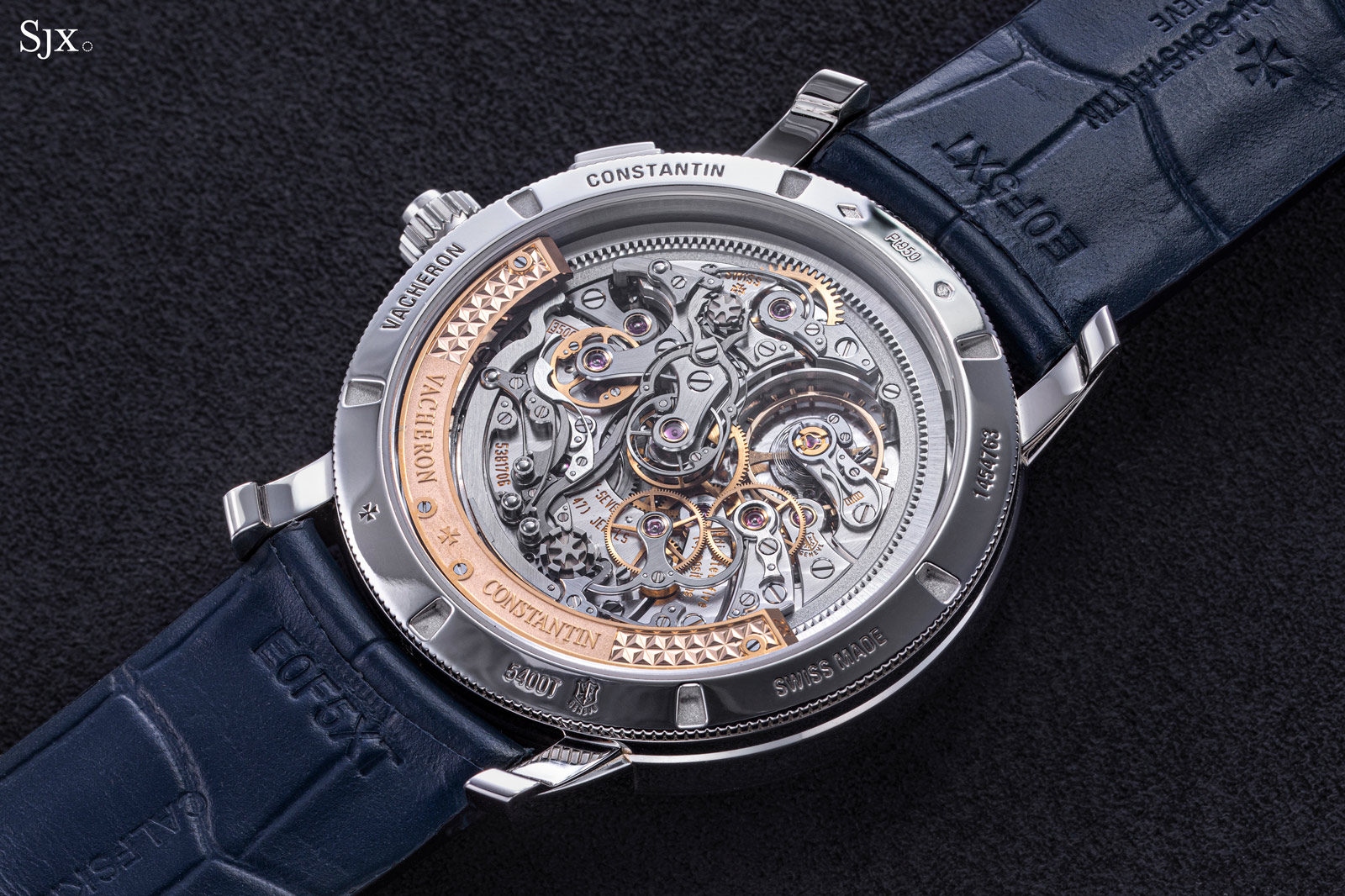
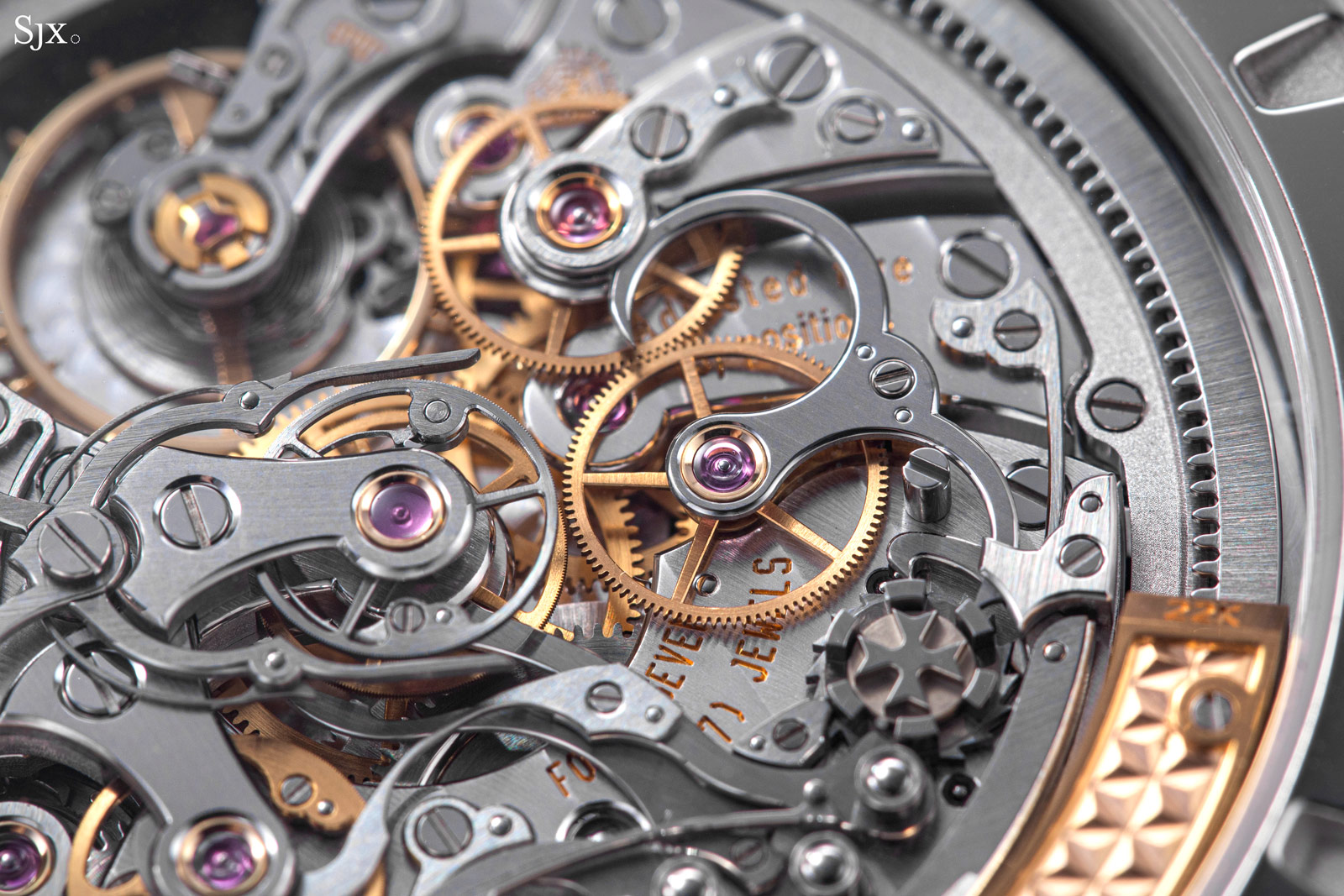
The scythe-like clutch lever with its pointed tip and twin inward angles along its bevelling
The cal. 3500 was clearly developed to prioritise thinness and beauty, which inevitably meant that some compromises were necessary in terms of technical features, like the lack of an isolator and the constant minute register.
But that is arguably a good thing. A chronograph movement created with only thinness in mind and aesthetics as a secondary consideration would probably be something like the Bulgari BVL 318, the thinnest wristwatch chronograph movement of all time but sparse in terms of visual appeal.
All things considered, the cal. 3500 is magnificent. And that makes the Traditionnelle split-seconds worthy of its hefty US$300,000-ish price tag.
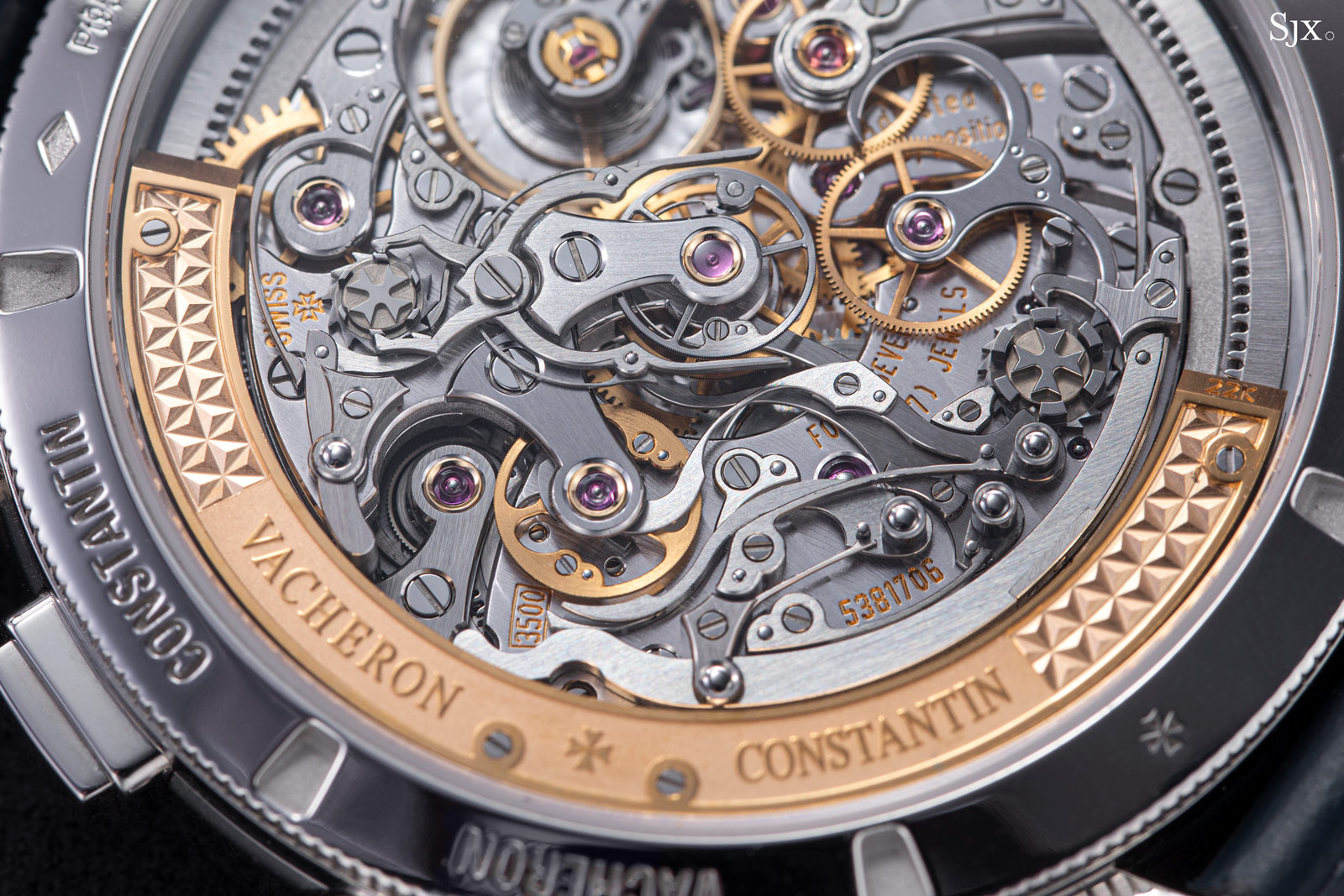
Platine
The Traditionnelle split-seconds chronograph is the latest in the CEP collection, a long-running series that started in 2006. The CEP treatment is simple: a standard model gets upgraded with platinum being used for most visible components.
So platinum is used for the case, dial, clasp, and strap, where the thread is actually fabric woven with platinum wire. Because CEP watches all stick to the same formula, they also share an elegant and restrained aesthetic of grey and blue – along with a “Pt950” hallmark on the dial.
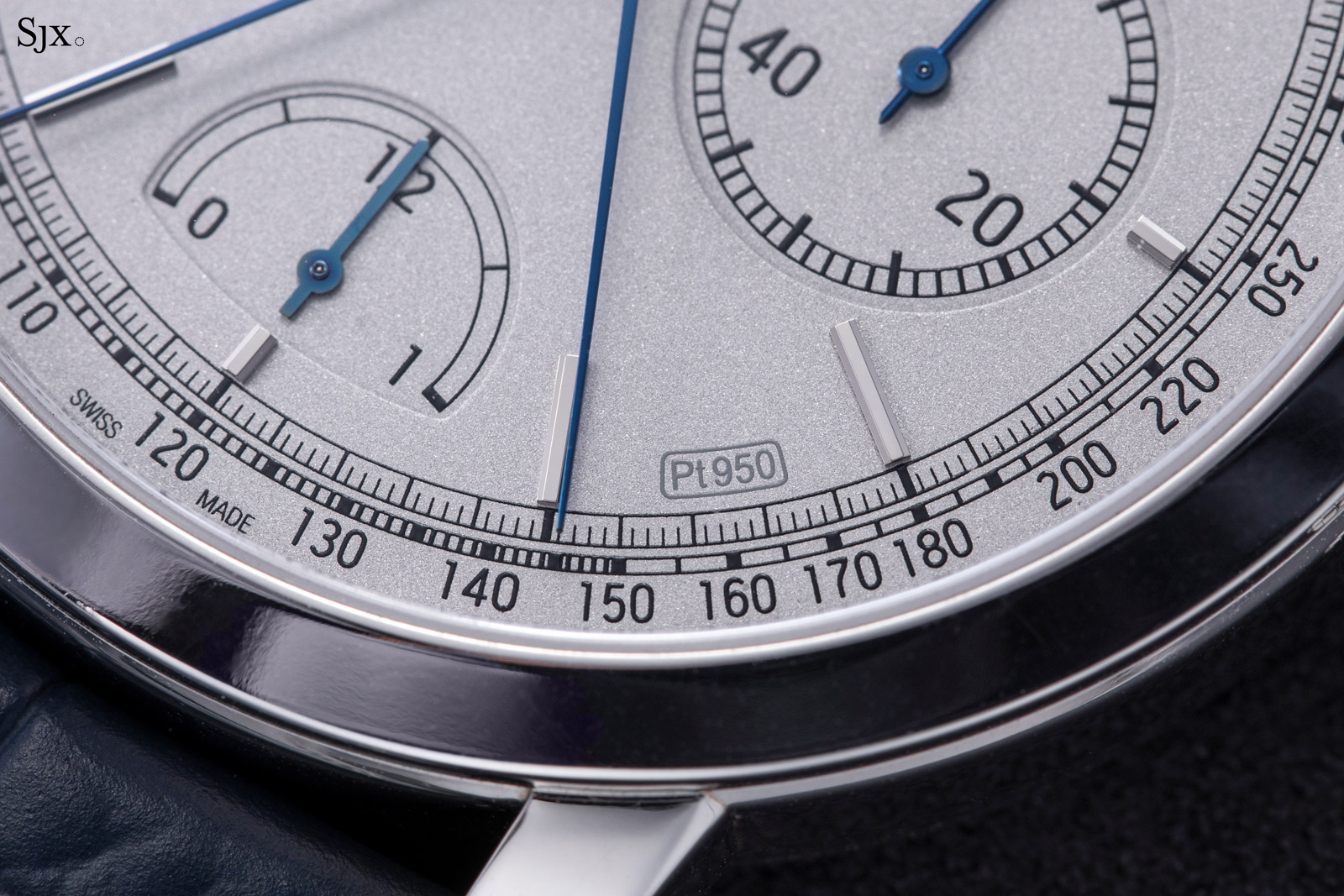
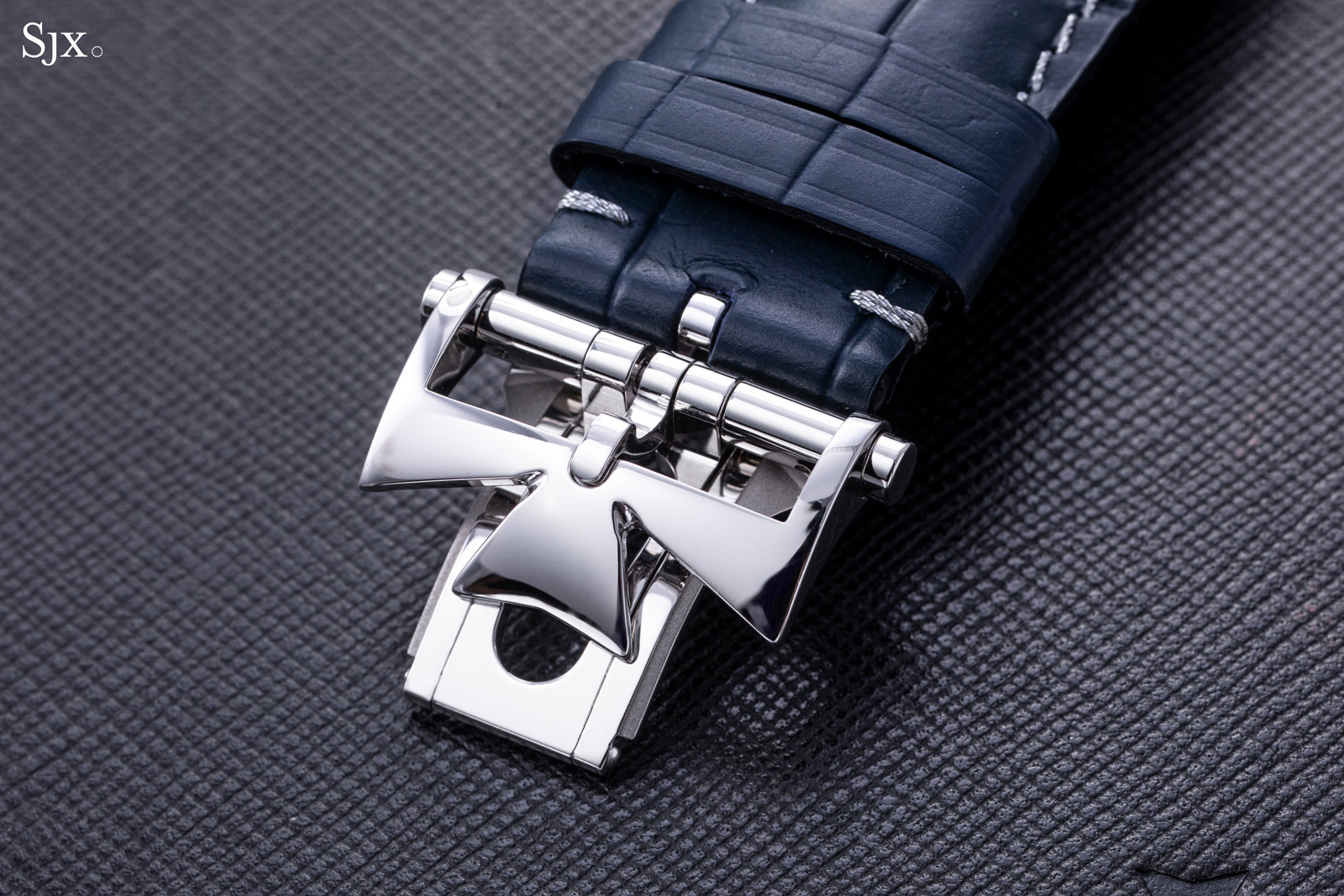
But the Traditionnelle split-seconds is unique in being the first CEP edition to be an entirely new model that is not in the standard catalogue. The CEP before it was the American 1921, which is available as a standard model in gold or platinum.
The case is platinum of course, which gives it good heft. At 42.5 mm in diameter it’s wider than the Patek Philippe ref. 5370P but slightly narrower than the Double Split. The dimensions are elegant, though on smaller wrists the width-to-height ratio might result in a dinner-plate appearance.
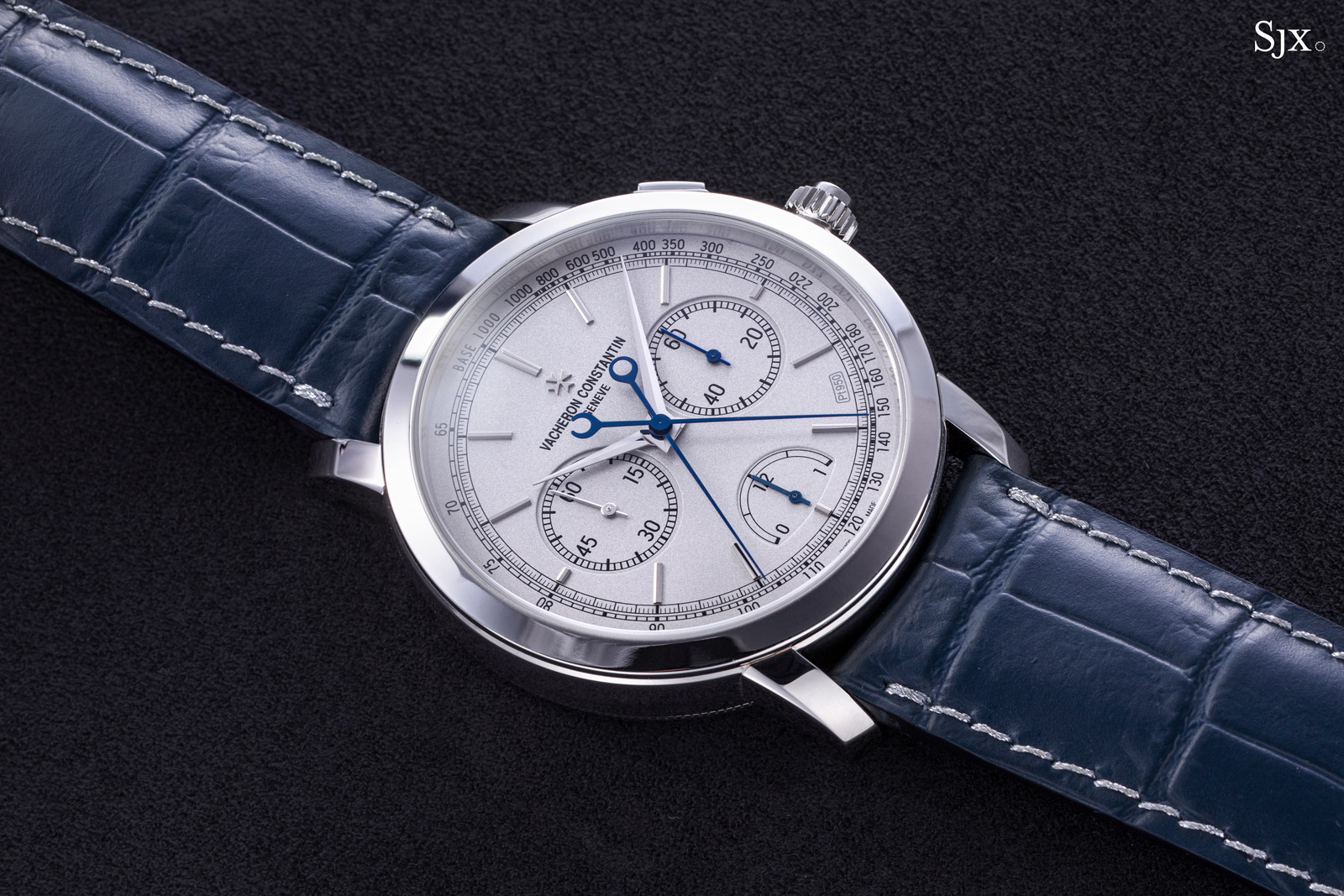
Despite being named traditionnelle, the line of watches is actually modern in style, with clean lines and no frills, save for some discreet flourishes visible on the sides. The split-seconds has the typical Traditonelle case and almost everything is linear and polished on the front.
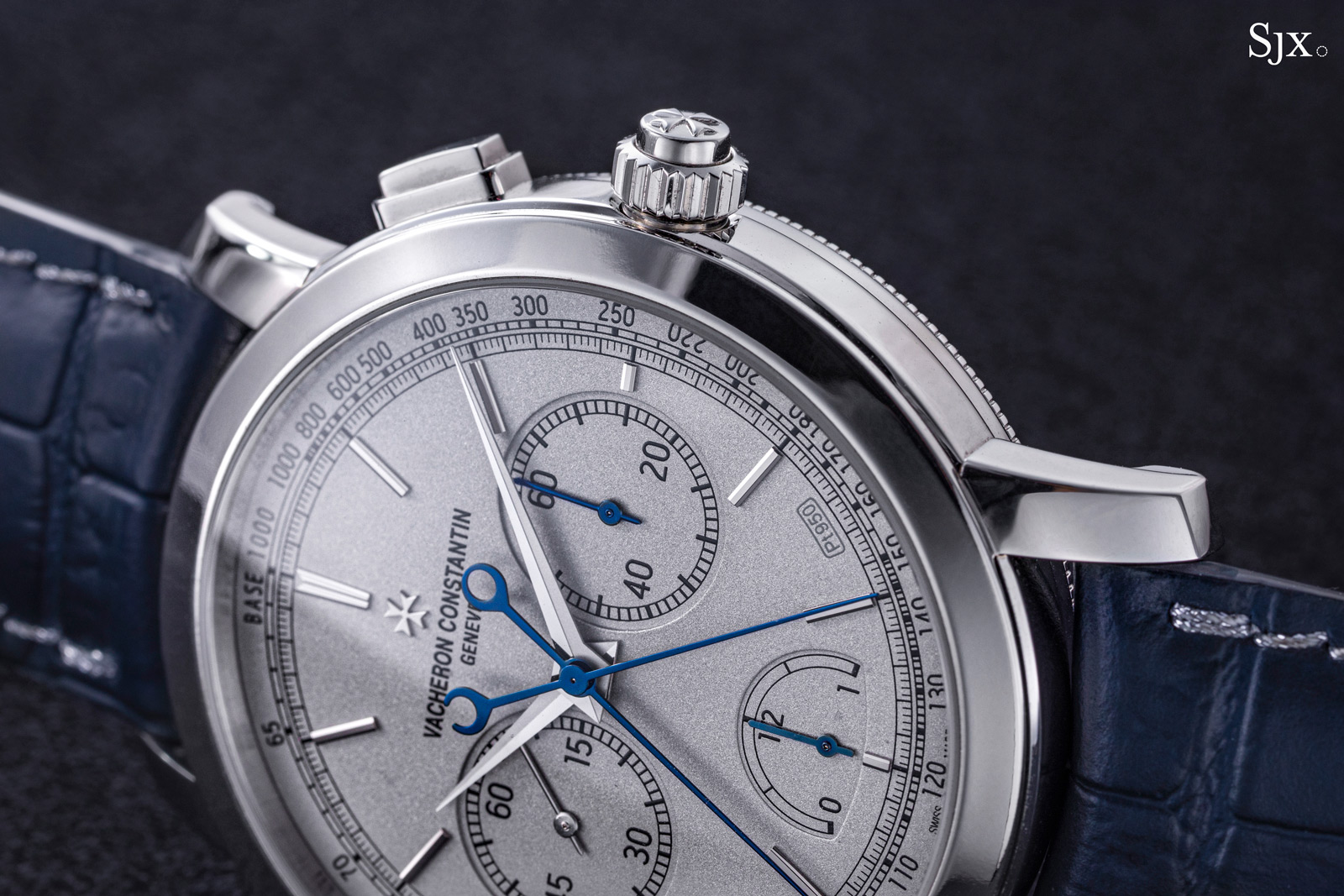
The profile of the case reveals the subtle details that define the Traditionnelle case. The lower edges of the lugs gently echo a Maltese cross, while the case back has a coin-edge rim that’s purely decorative (the back is screwed on via notches).
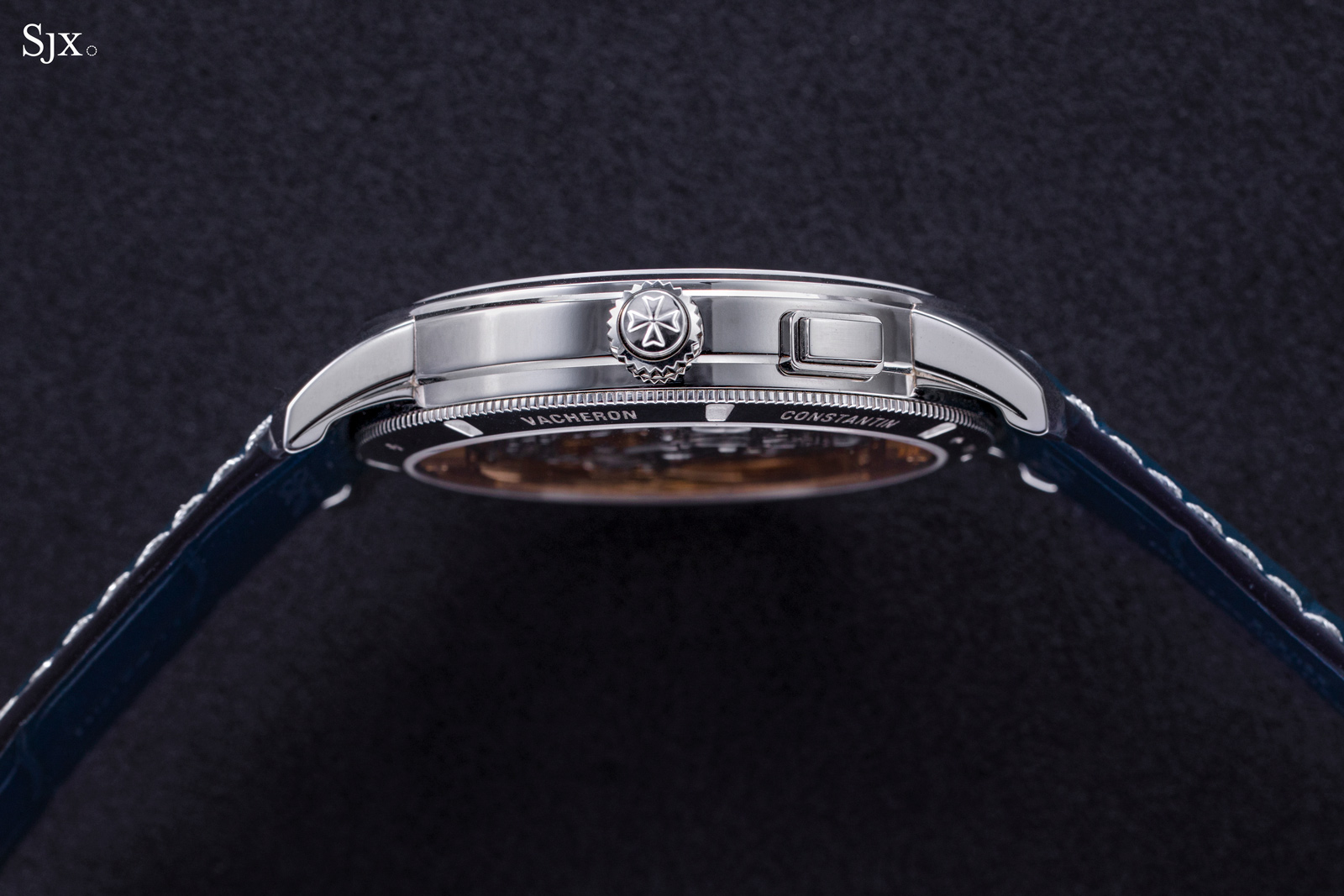
The case side has a single step to create the Maltese cross along the lugs
These details are only occasionally visible when the watch is on the wrist. They, along with the relief Maltese crown on the crown, are the only decorative elements on the case.
This simplicity suits the dial, which is also platinum. It’s finished in the usual manner for CEP – sandblasted to give it a fine, grained finish that’s matte. The entire dial is finished in that manner, including the recessed registers and power reserve scale.
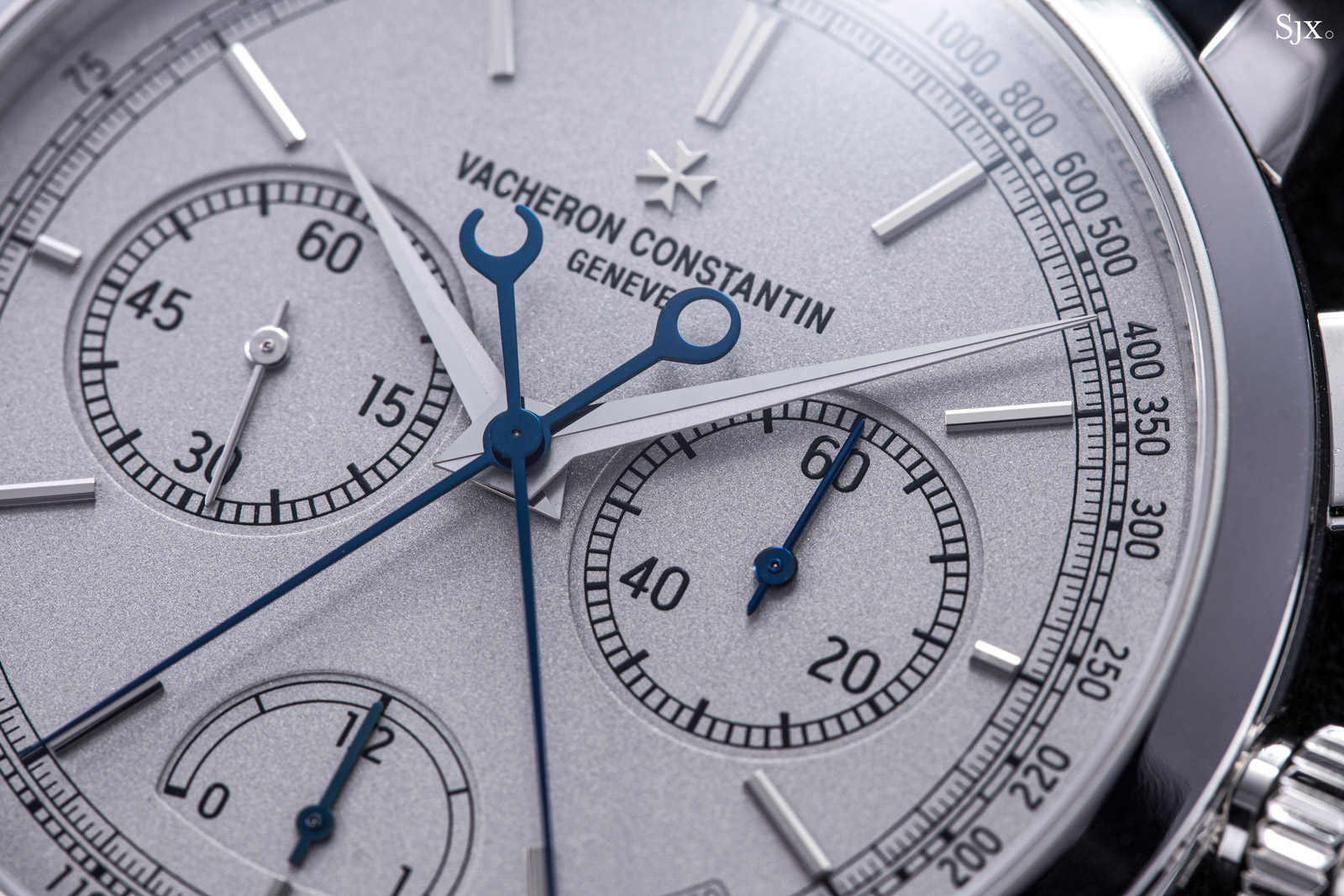
A change in texture for the indications and tachymeter would have made the dial a bit more interesting, but that is too complex to execute on platinum. While that is impractical, adjusting the typography for the registers and scale is feasible – that would be a good tweak in my opinion.
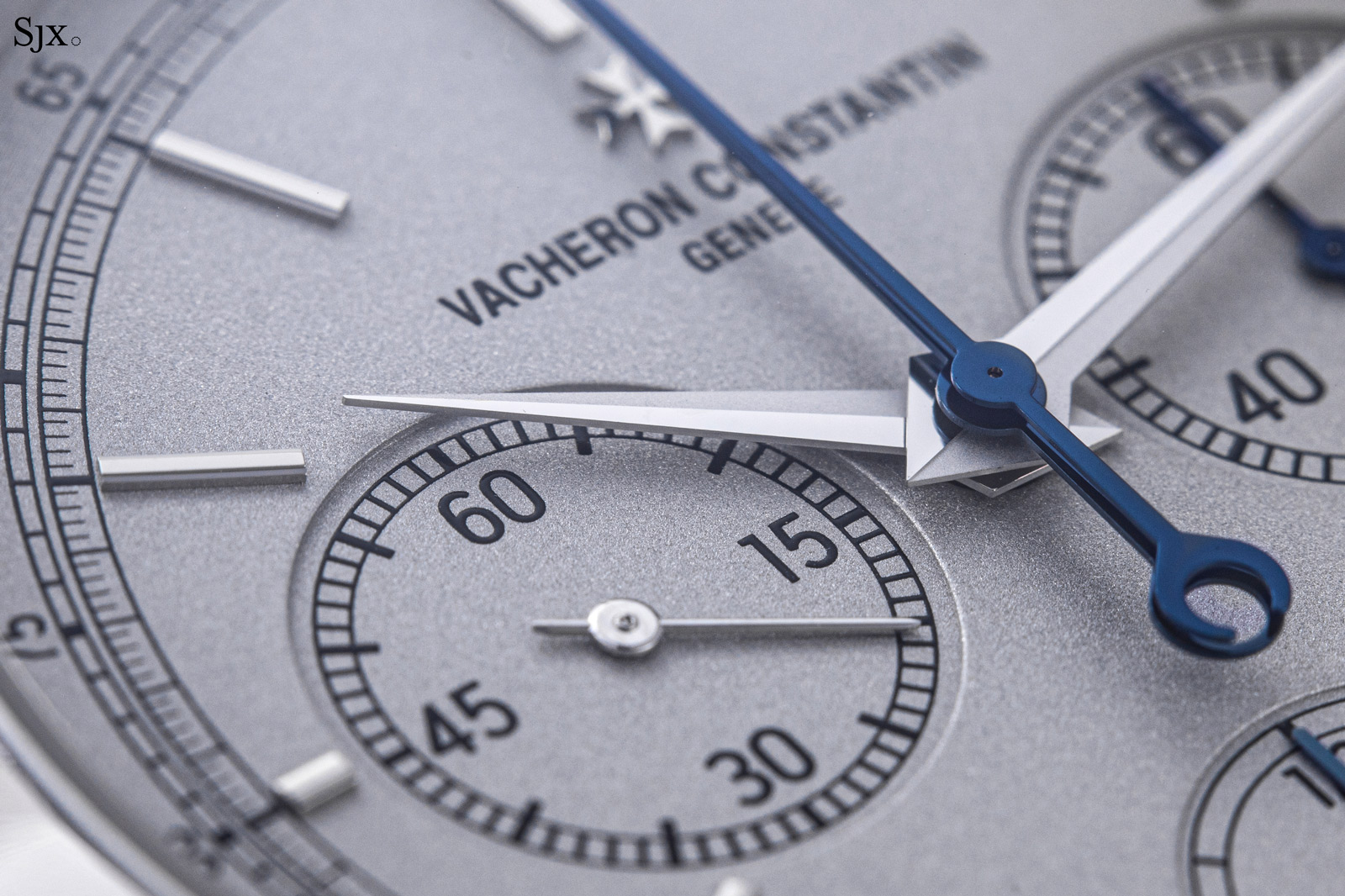
The only elements of the dial that are not platinum are the hands and hour markers. The chronograph and power reserve hands are blued steel, while the other hands are white gold, as are the hour markers and Maltese cross at 12 o’clock.
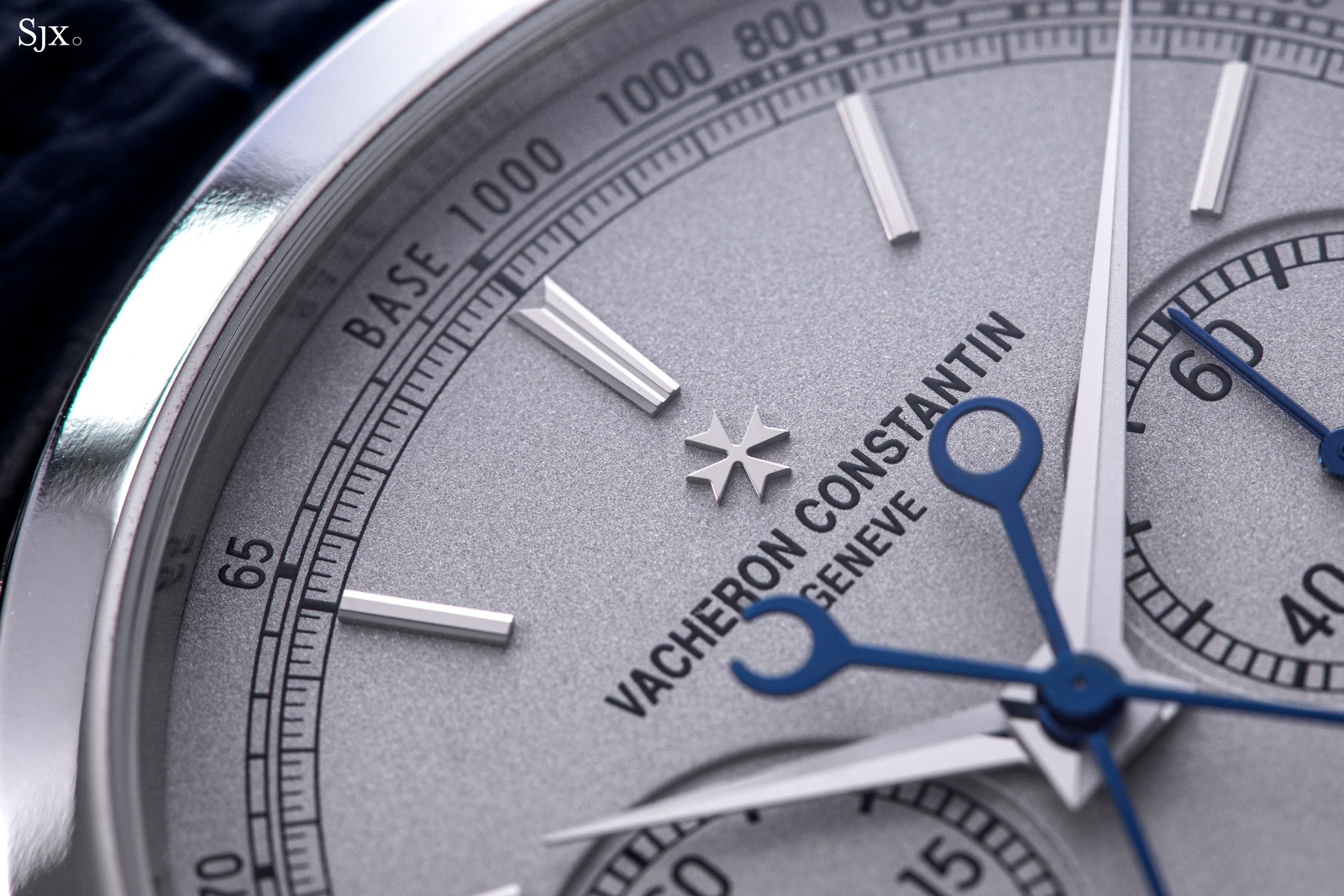
The markers are substantial and sharply detailed with lengthwise bevelling
Calibre 3500
In contrast to low-key sensibility of the dial, the movement celebrates itself. The chronograph is traditionally and wonderfully constructed, but with a smart automatic winding mechanism that obscures nothing.
At 5.2 mm high, the cal. 3500 is the thinnest split-seconds chronograph movement created for a wristwatch – ever. It trumps the previous record holder, the incredibly refined CHR 27-525 PS of Patek Philippe, by 0.05 mm.
Found in the refs. 5959 and 5950, the CHR 27-525 is eminently traditional; in fact it was inspired by a Victorin Piguet calibre that Patek Philippe used in its split-seconds chronograph wristwatches of the early 20th century.
It is also a tiny chronograph movement by modern standards, at just 27.3 mm in diameter. In contrast, the distinctly more modern CHR 29-535 PS found in the ref. 5370P is 29.6 mm.
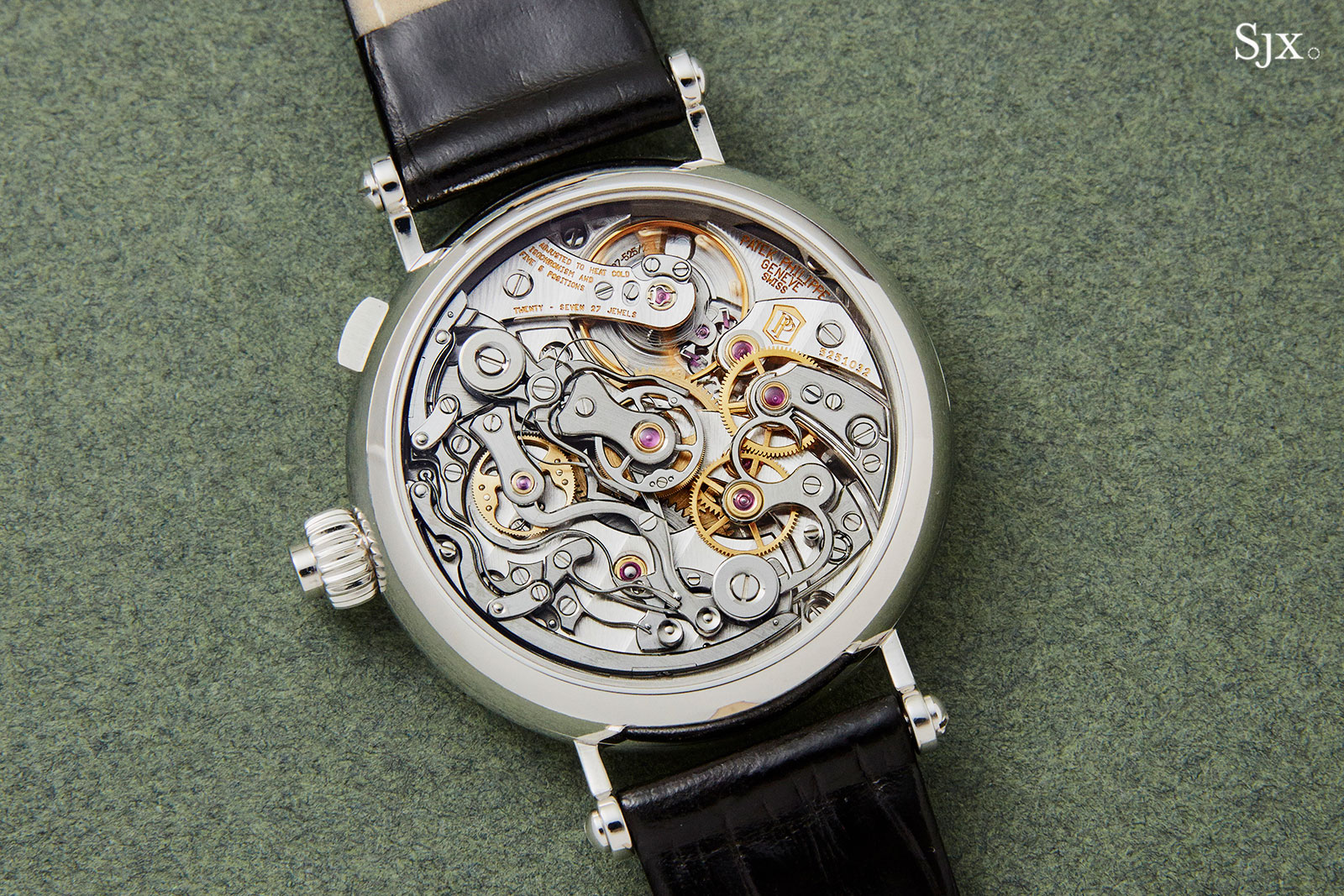
The CHR 27-525 in the ref. 5959P
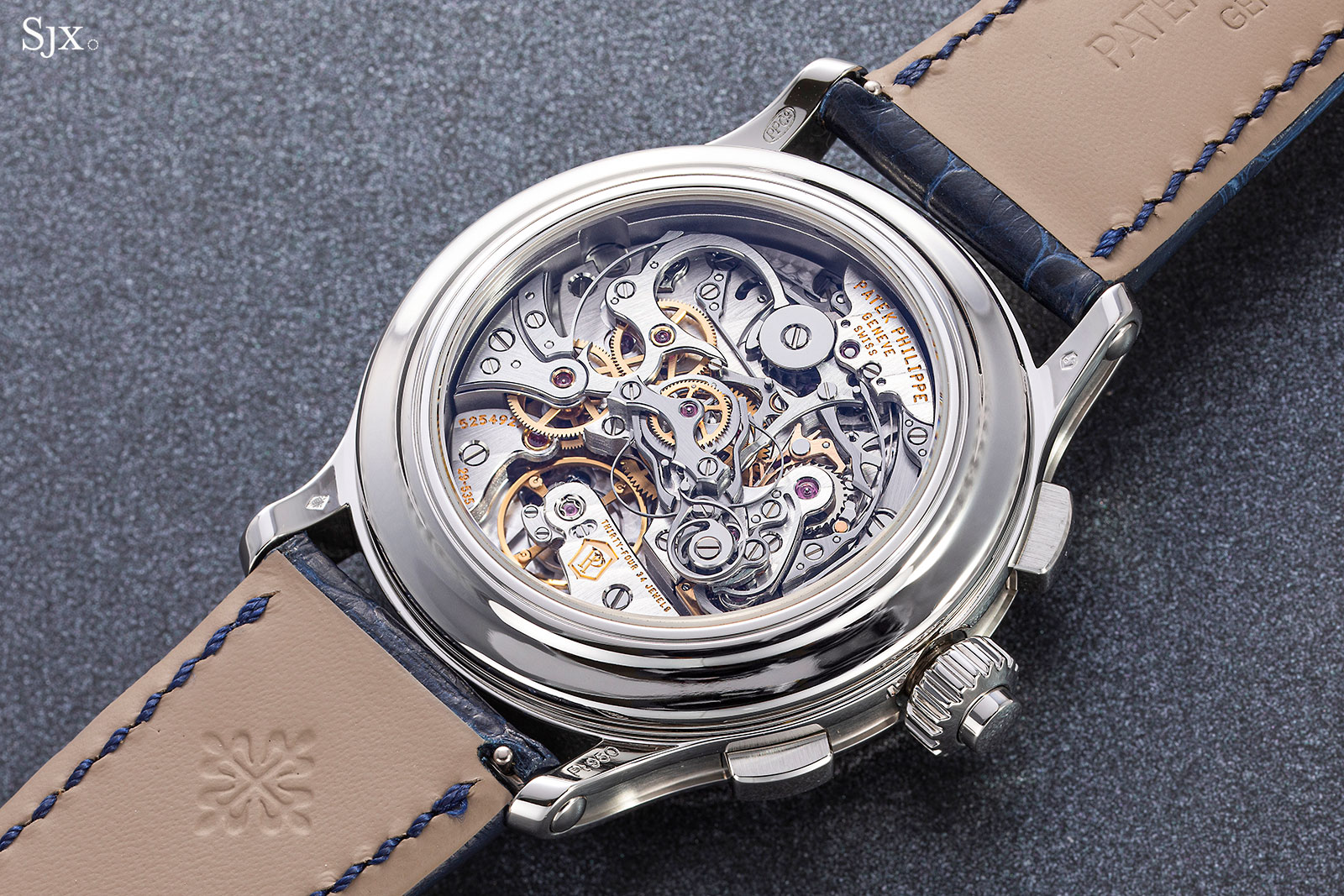
And the CHR 29-535 PS in the ref. 5370P
In contrast, the cal. 3500 is automatic. Less traditional no doubt, but the result is an arresting blend of tradition and contemporary watchmaking.
One can surmise that the movement’s designers did everything they possibly could to take the record from Patek Philippe. As a result, concessions had to be made, so two features expected in conventional, high-end chronographs are missing, namely a jumping minutes counter and split-seconds isolator. But the cal. 3500 is anything but conventional, and should not be judged against movements that are substantially thicker.
The chronograph works are remarkably attractive. But they are especially unusual because the levers are slender, which gives them a graceful appearance. That contrasts with many ultra-thin chronographs that instead rely on wide and flat levers to minimise thickness.
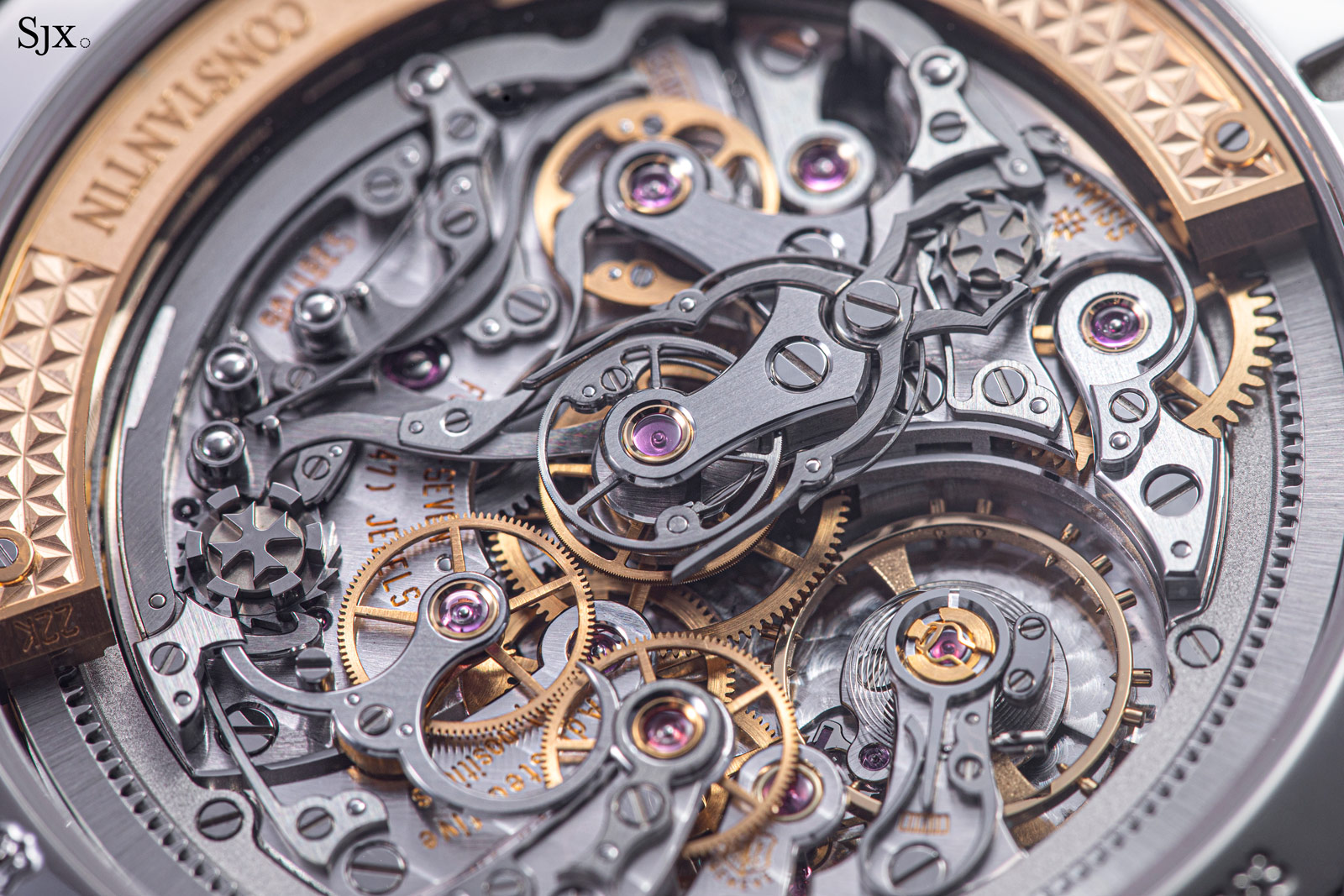
The two best features of the chronograph mechanism are the clutch lever off to the side and the split-seconds assembly in the centre. Both are incredibly fine and minute, yet bring to mind the same parts in the best pocket watch chronographs, which are several orders of magnitude larger.
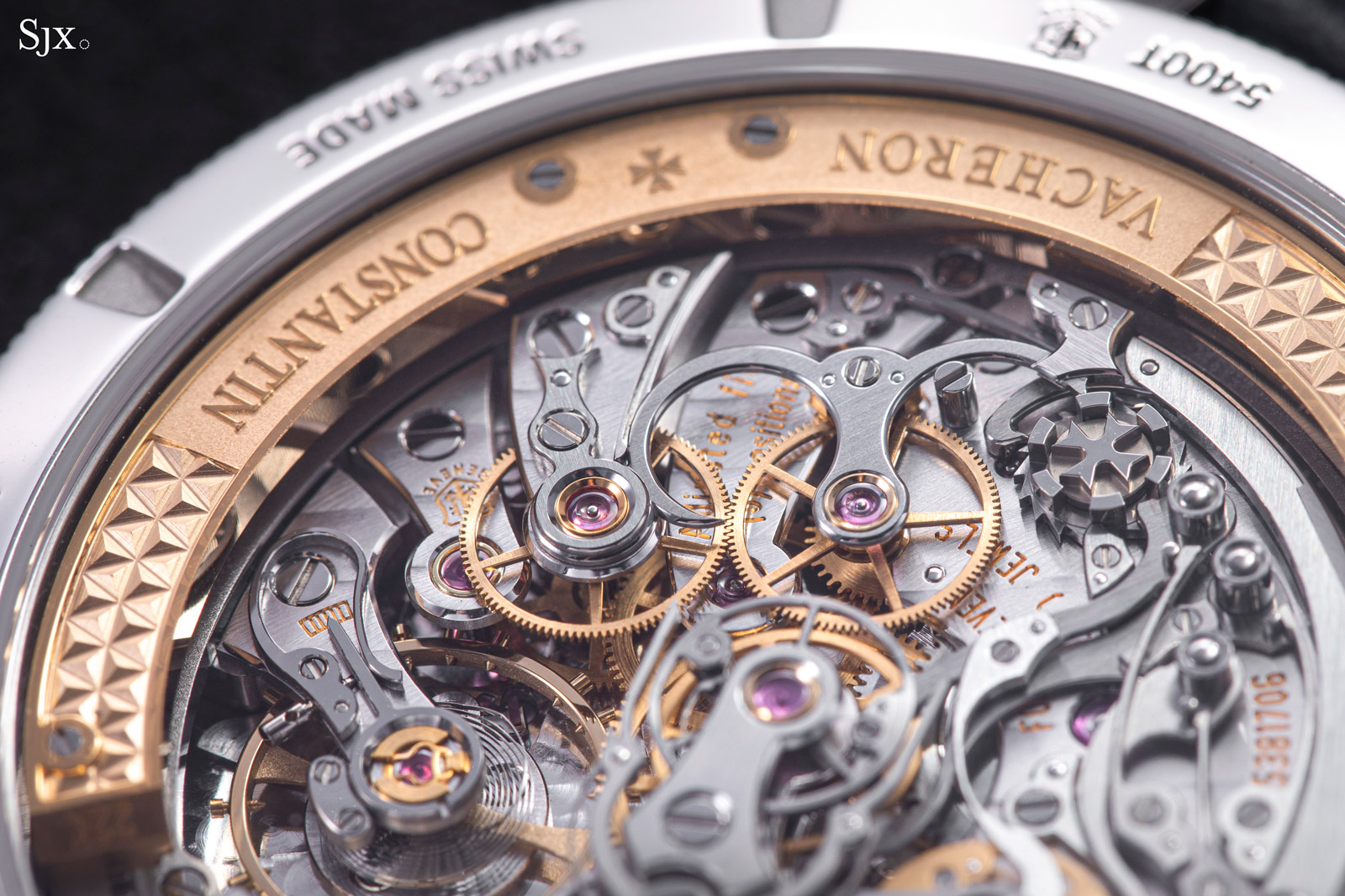
The strikingly curved clutch lever terminates in a perfectly sharp point
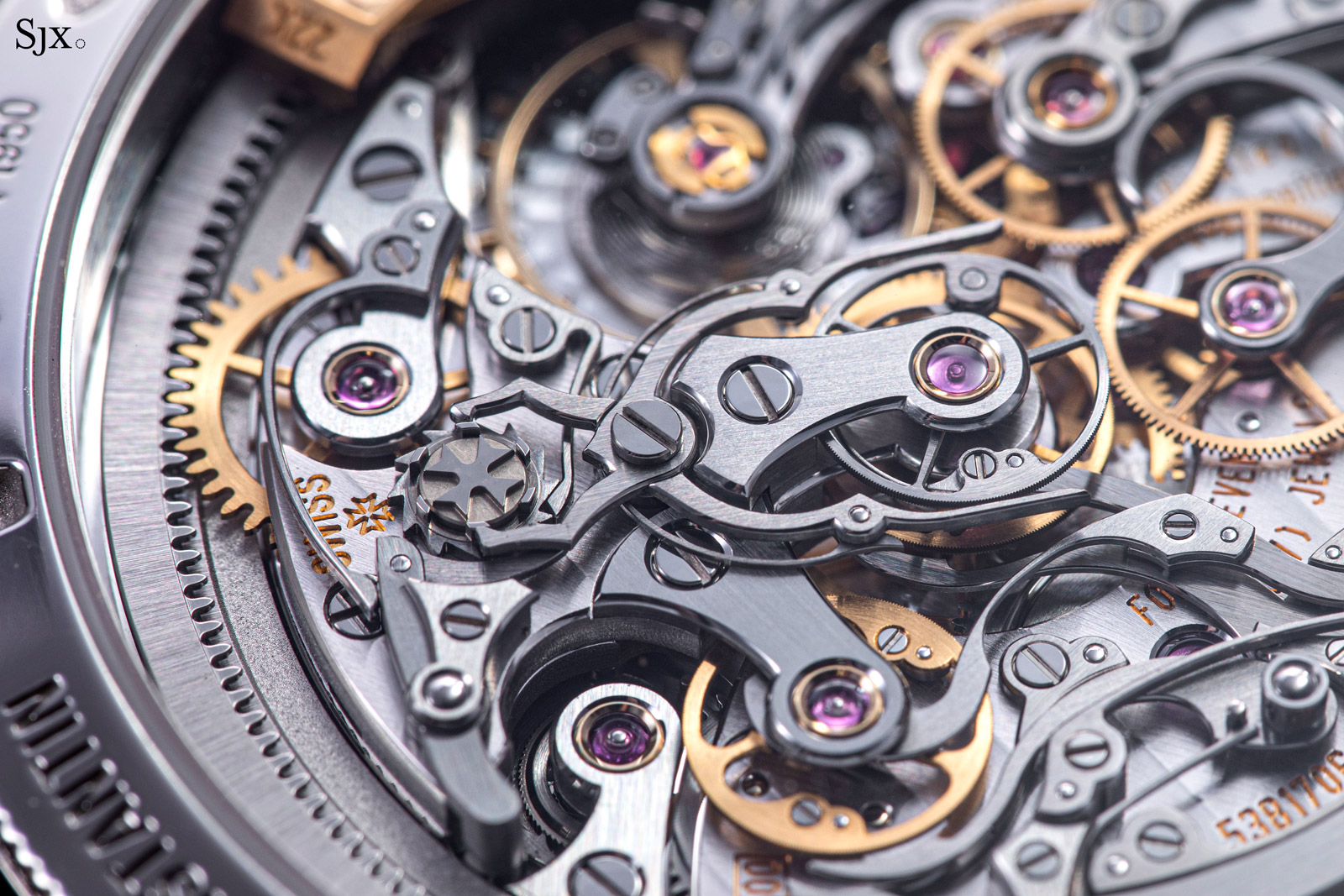
The split-seconds mechanism with its clamps and column wheel
The rest of the movement is equally accomplished. The intricate network of steel levers and springs is impressive in its density and detail considering the height of the movement.
And despite the height of the movement, it still manages an overcoil hairspring. Its designers deserve compliments for ensuring this was taken care of.
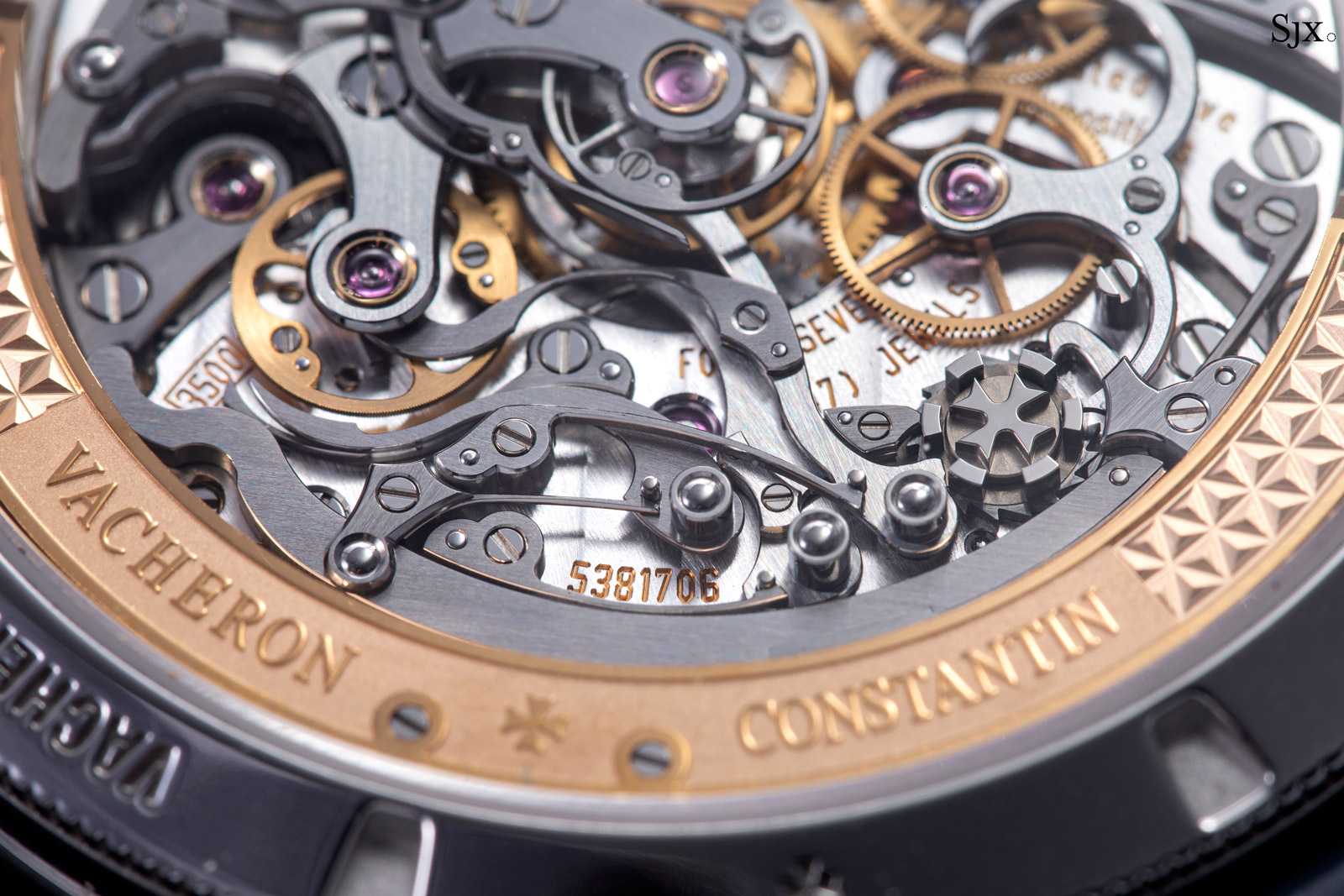
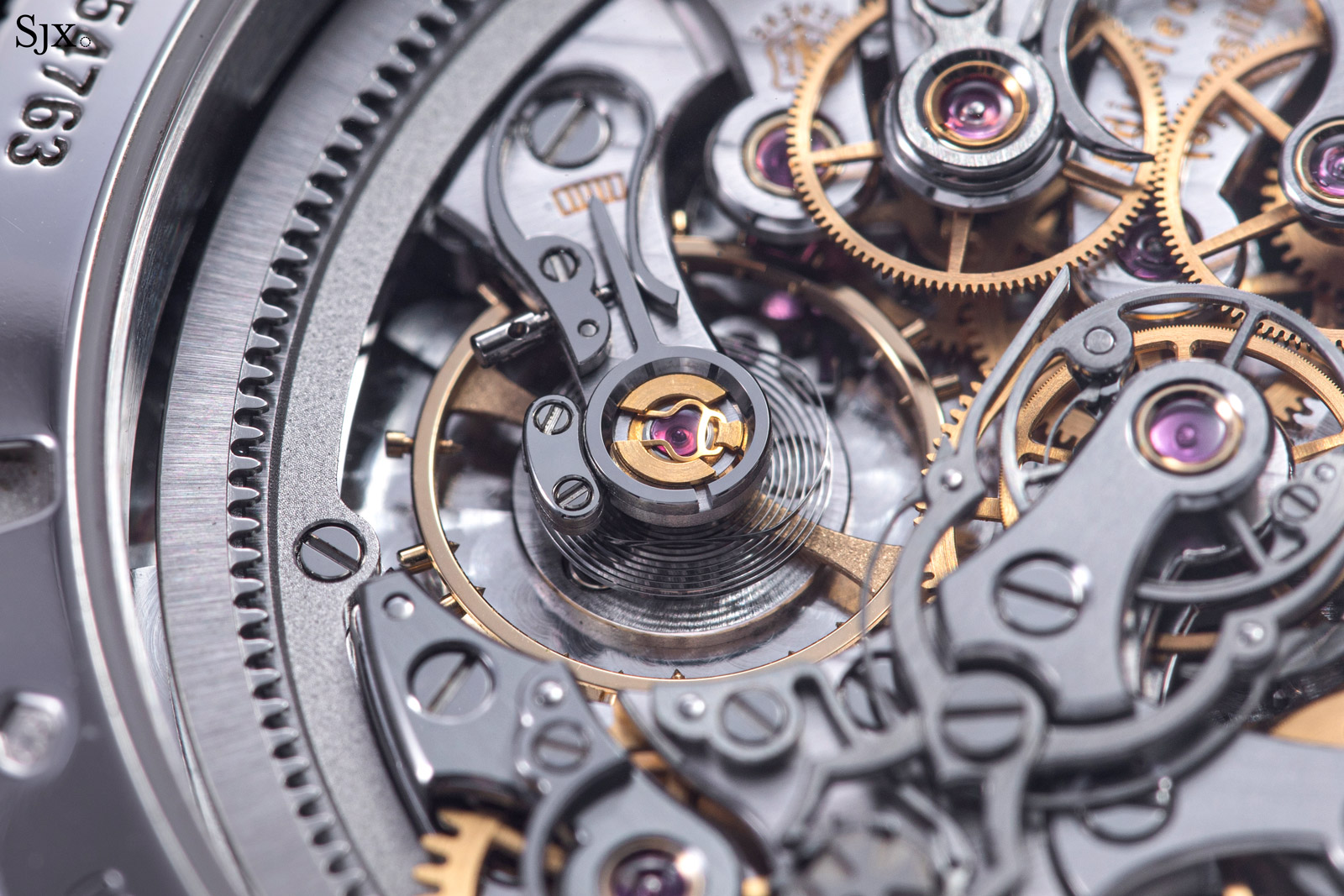
The overcoil hairspring attached to a balance wheel with variable-inertia screws, along with a swan’s neck regulator index for beat-error adjustment
One concession made for the sake of thinness is the minute counter, which has a continuously moving hand instead of the semi-instantaneous hand of most chronographs. While a semi-instantaneous creeps forward and then jumps at the 60-second mark, this hand just steadily travels around the register at a constant pace. When the chronograph is stopped, a brake lever contacts the minute wheel, stopping its rotation along with the hand.
This allows the minute wheel to be smaller in diameter and sit on the same plane as other wheels. And that overarching desire for height reduction also informs the most novel feature of the calibre.
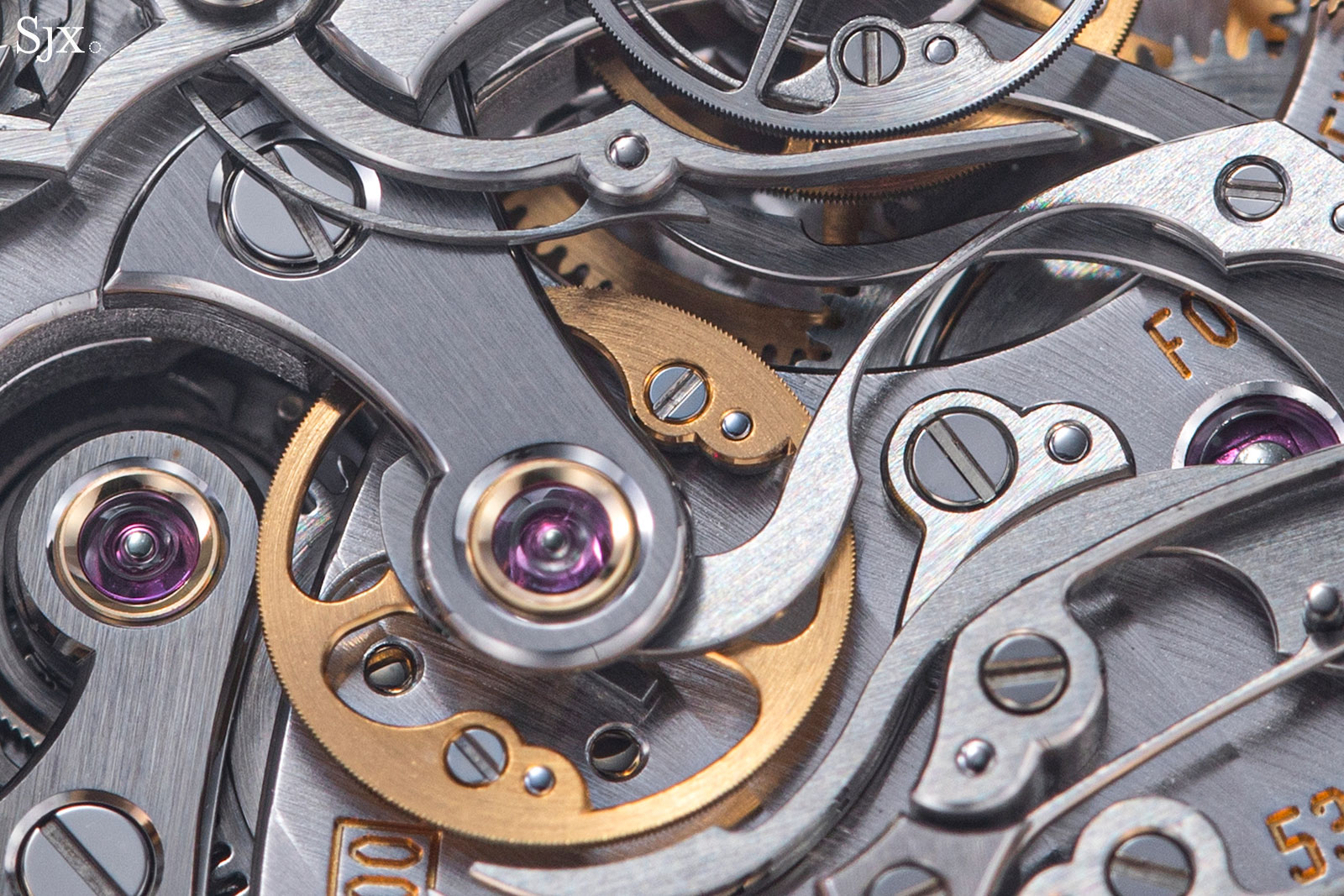
The minute wheel with impressive bevelling on its inner rim
While the chronograph is the most obvious feature of the movement, its most unusual aspect is the automatic winding mechanism. Traditionally constructed split-seconds chronographs are uniformly manually wound, except for the cal. 3500.
The cal. 3500 manages to preserve the traditional appearance with all the levers and wheels visible because the automatic winding mechanism is cleverly positioned around the movement, rather than over it as is convention. This peripheral winding mechanism allows the movement to be thin, while also preserving the stellar view.
And because the winding mechanism is around the movement, it increases the overall diameter of the cal. 3500 to a massive 37.66 mm. But a large portion of that is the rotor and winding ring, I expect the base movement and chronograph are under 30 mm.
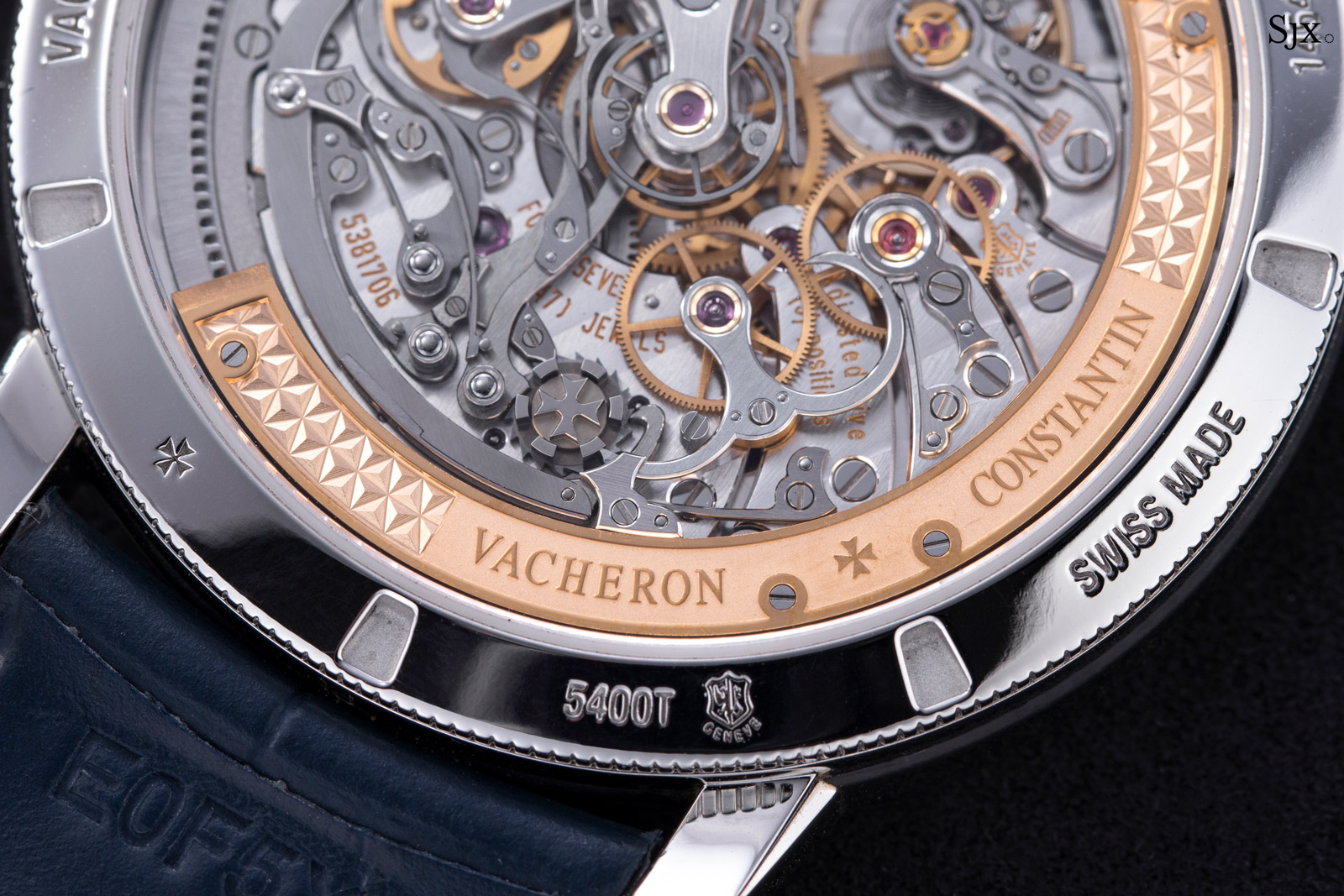
The oscillating weight is 22k rose gold and finished with a repeating Maltese cross motif in relief
Although the concept of peripheral winding is decades old – Patek Philippe was one of the first to debut such a mechanism in 1950s with the cal. 350 – it only gained traction in the last two decades when the technology advanced sufficient to make it reliable. The peripheral winding movements of the 20th century, on the other hand, were more like experimental products, and typically finicky and inefficient.
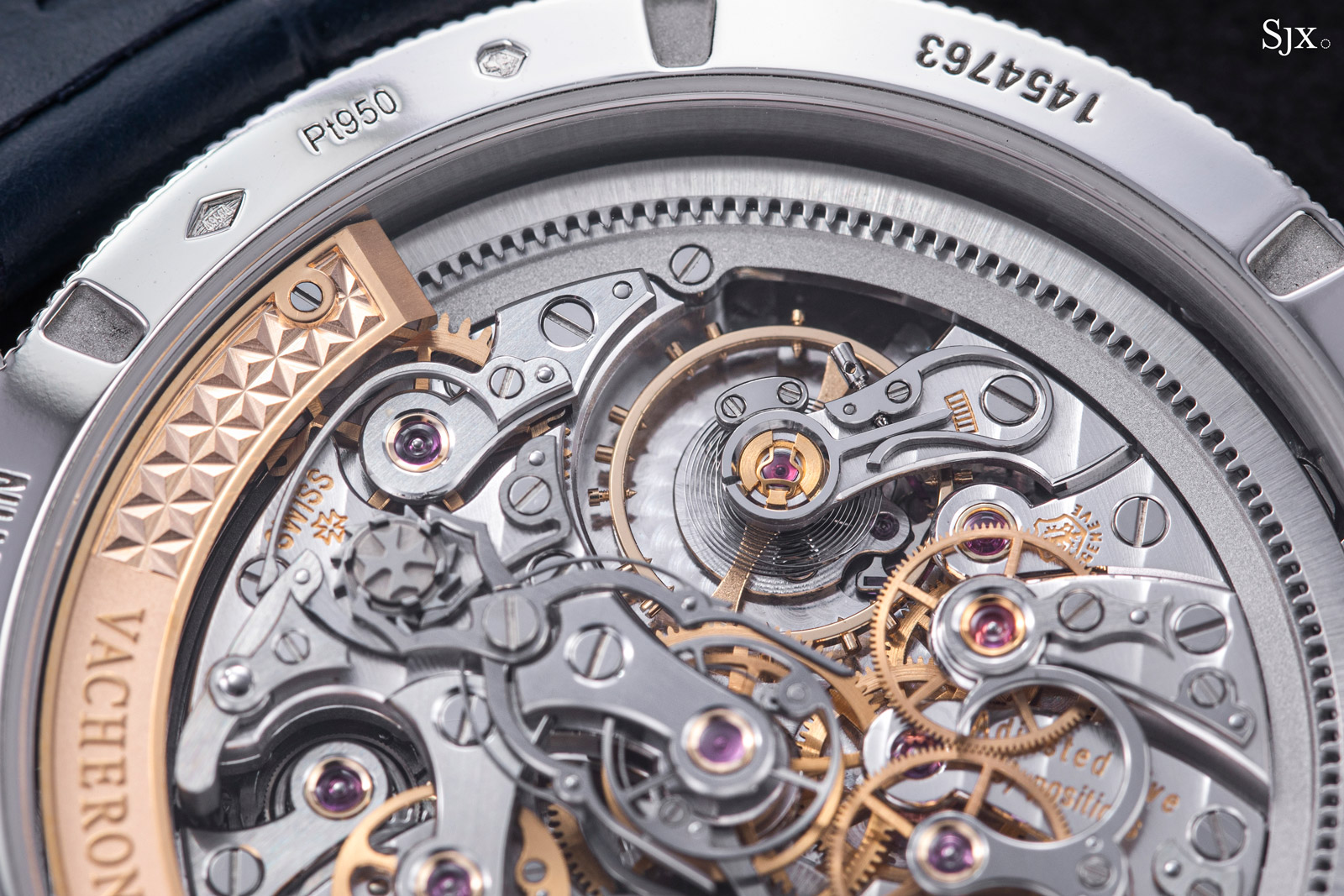
The large wheel with teeth on its inner rim that surrounds the movement is the peripheral winding ring
Peripheral winding isn’t commonplace today, but found in a fair number of ultra-thin watches from the likes of Breguet, Bulgari, and Piaget. And on the cal. 3500 it is the perfect solution, since it ensure the lovely chronograph mechanism can be admired in its entirety.
The operation of the winding mechanism is straightforward: a toothed ring with a semicircular gold weight sits on the periphery of the movement, functioning as the rotor and winding the mainspring via a winding wheel located next to the balance. And it also makes the power reserve indicator more unusual than average, since the wearer will know how much of the 48-hour running time is remaining.
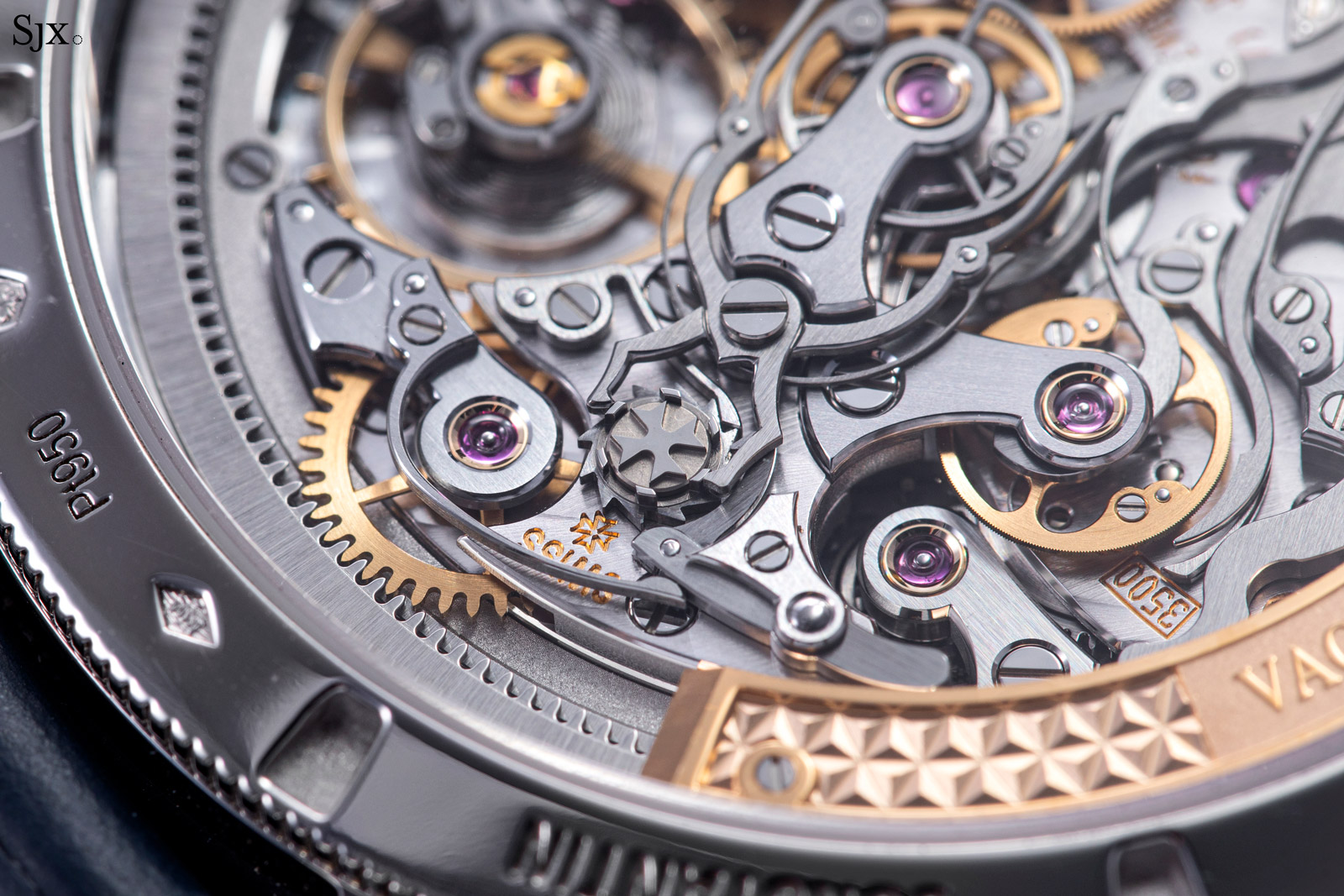
The winding wheel that meshes with the winding ring
Interestingly, the instructions for the watch state that the split-seconds chronograph should only be activated when the movement is at least 75% wound. That is presumably because the energy consumed by the chronograph, as well as the drag generated when the split-seconds and elapsed minutes hands are stopped, will affect the amplitude of the balance wheel significantly, perhaps enough to impair timekeeping.
This inconvenience is the norm for a chronograph set-up without an isolator, especially one that is so thin and also wound via a peripheral mechanism that is likely less efficient than a conventional rotor. Considering the construction of the movement as well as its beauty, the power reserve requirement is hardly a drawback.
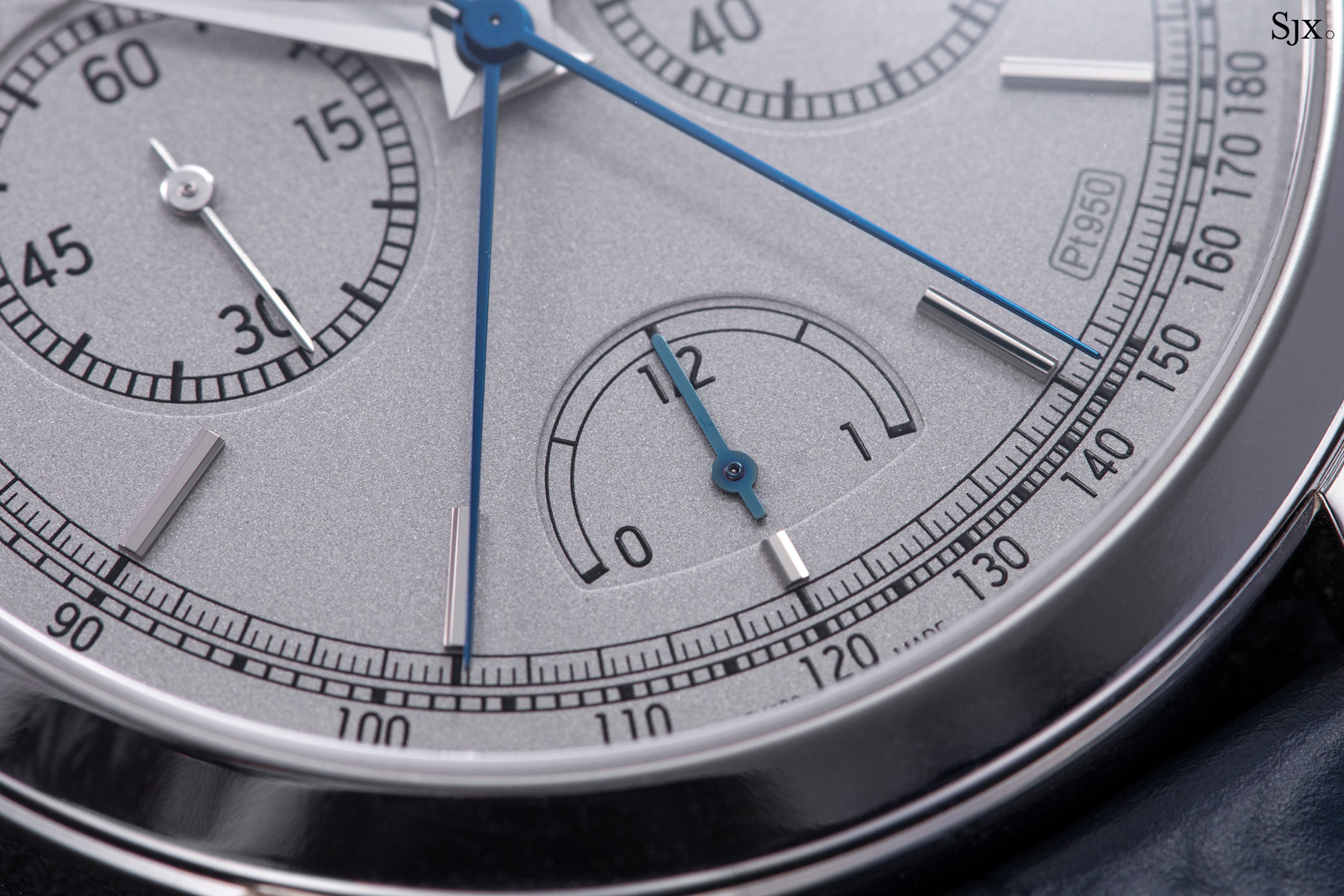
Useful for an automatic
Finishing
Needless to say, the finishing of the cal. 3500 is exceptional. Like most of mechanical movements by Vacheron Constantin, it bears the Poinçon de Genève hallmark, which certifies that is meets certain decorative and functional criteria. But that isn’t the point, because the cal. 3500 does far, far better than that.
As the cliche goes, it has to be seen to be believed and the photos illustrate that well. Just trying counting then number of inward angles on the anglage across the movement – it’ll be as challenging as counting the dollars needed to buy one of these.
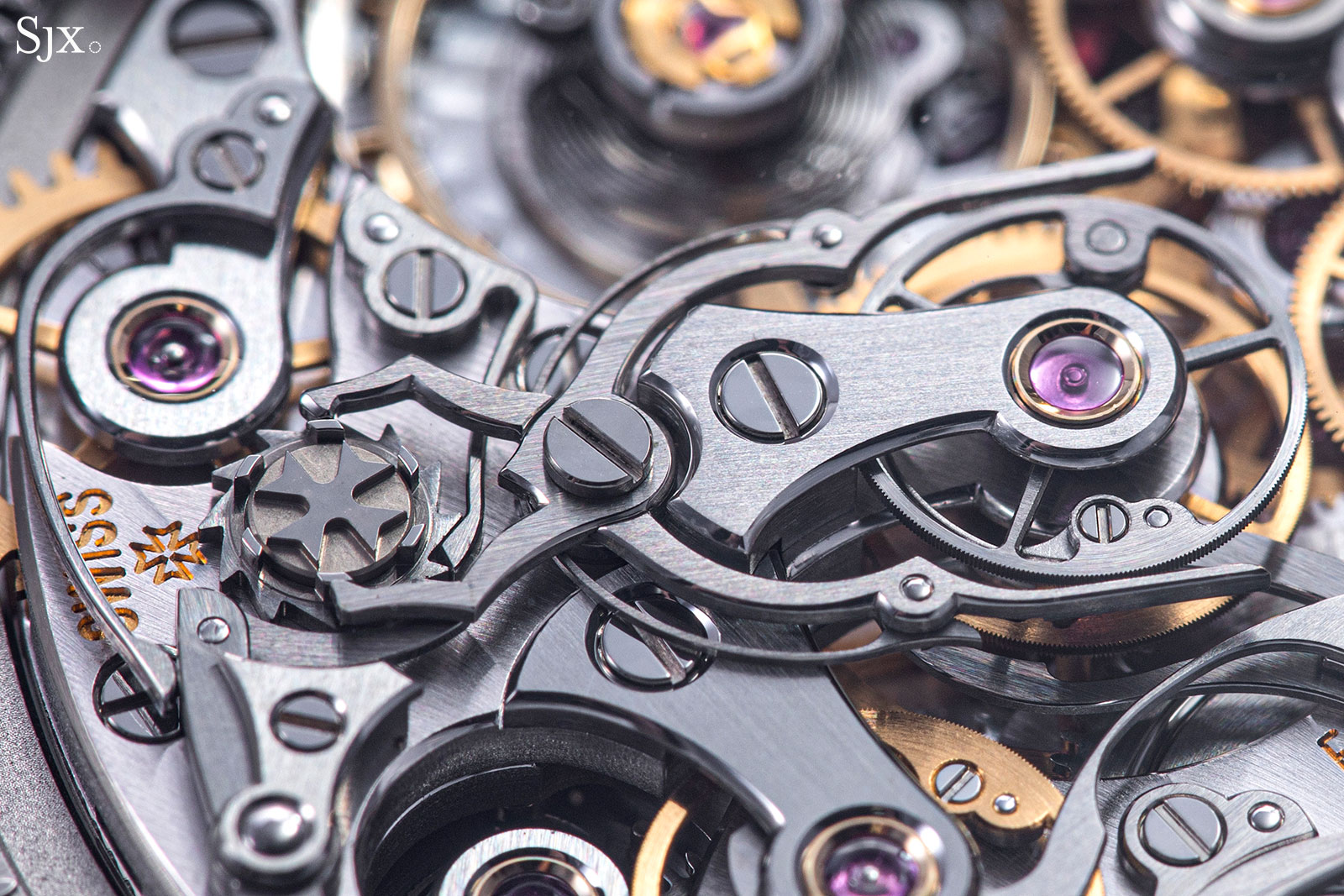
Every level of the split-seconds and chronograph assemblies are finished, even those hidden below
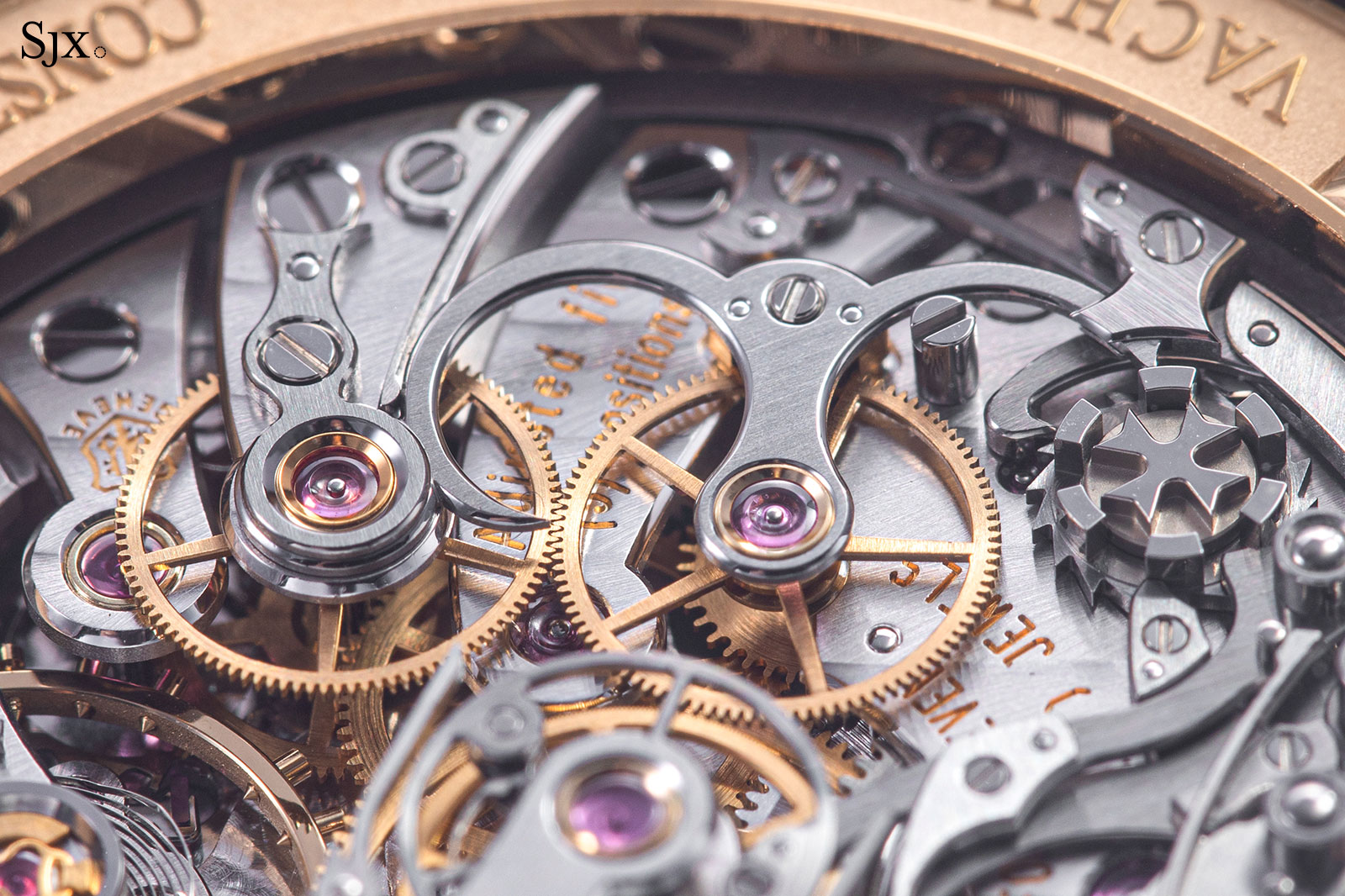
The clutch lever equals the best of them, namely A. Lange & Söhne
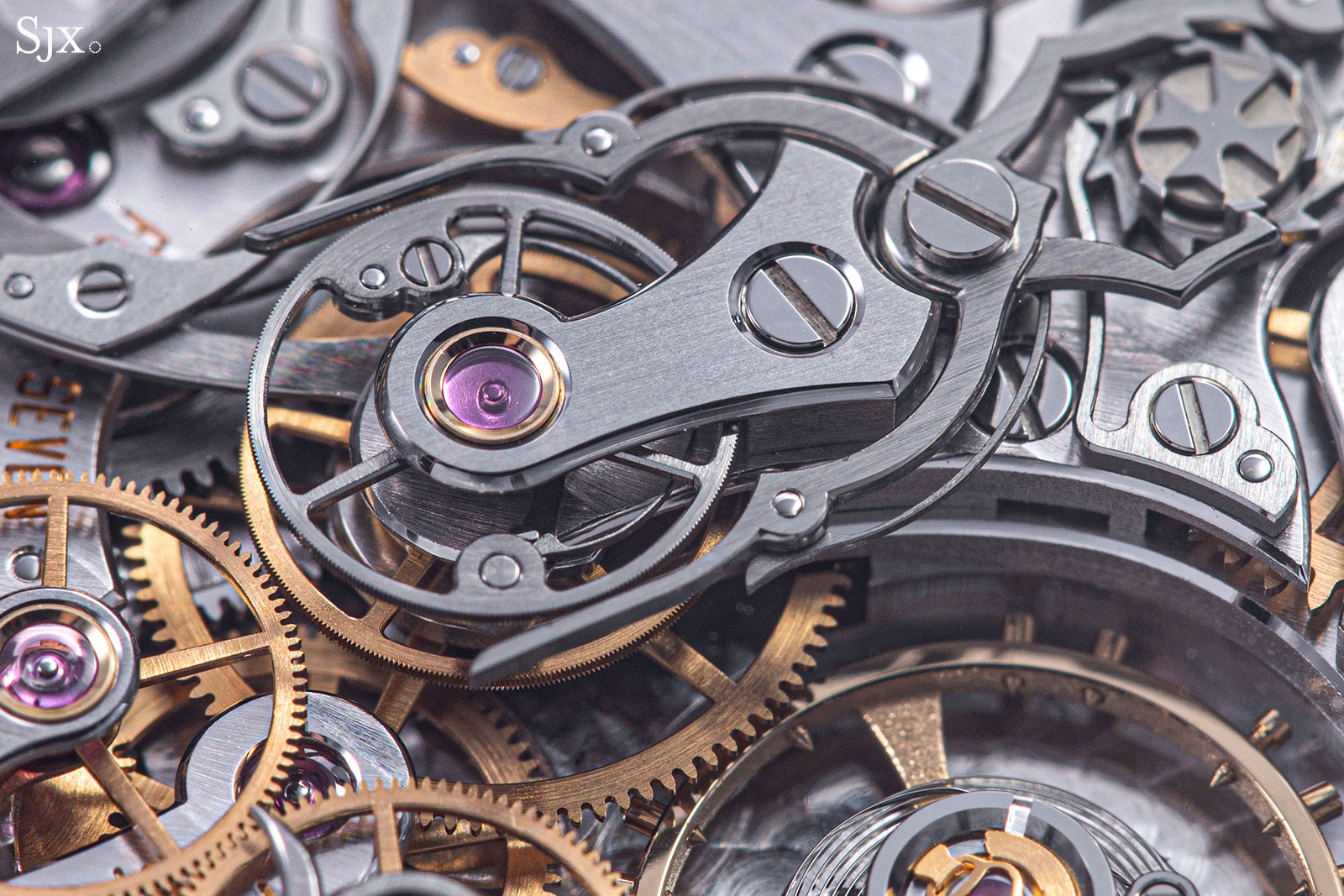
Small as it is, the split-seconds wheel is bevelled on its inner rim, while the narrow clamps are also bevelled along their edges
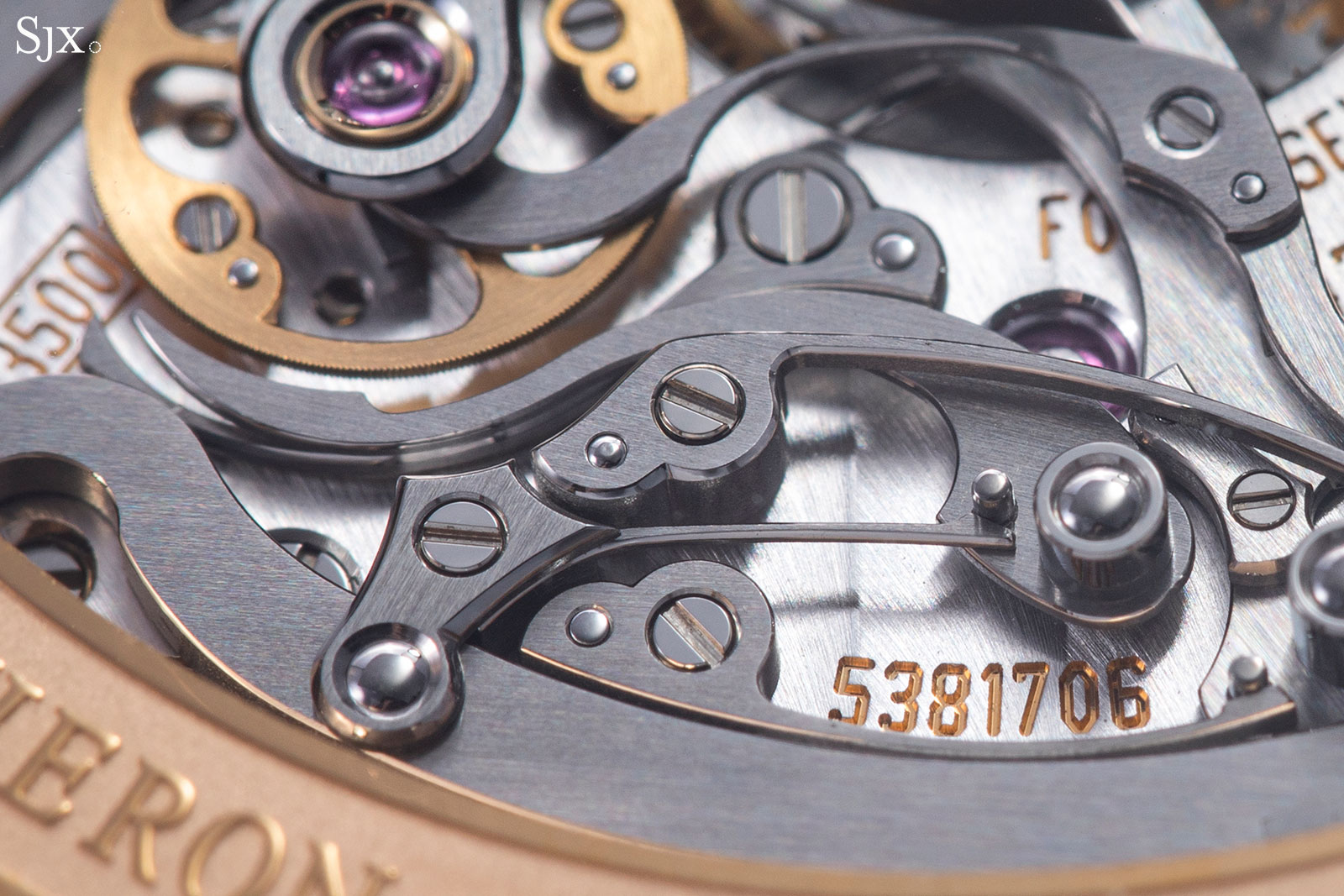
The tension springs for the chronograph levers serve a rudimentary function but are equally decorated
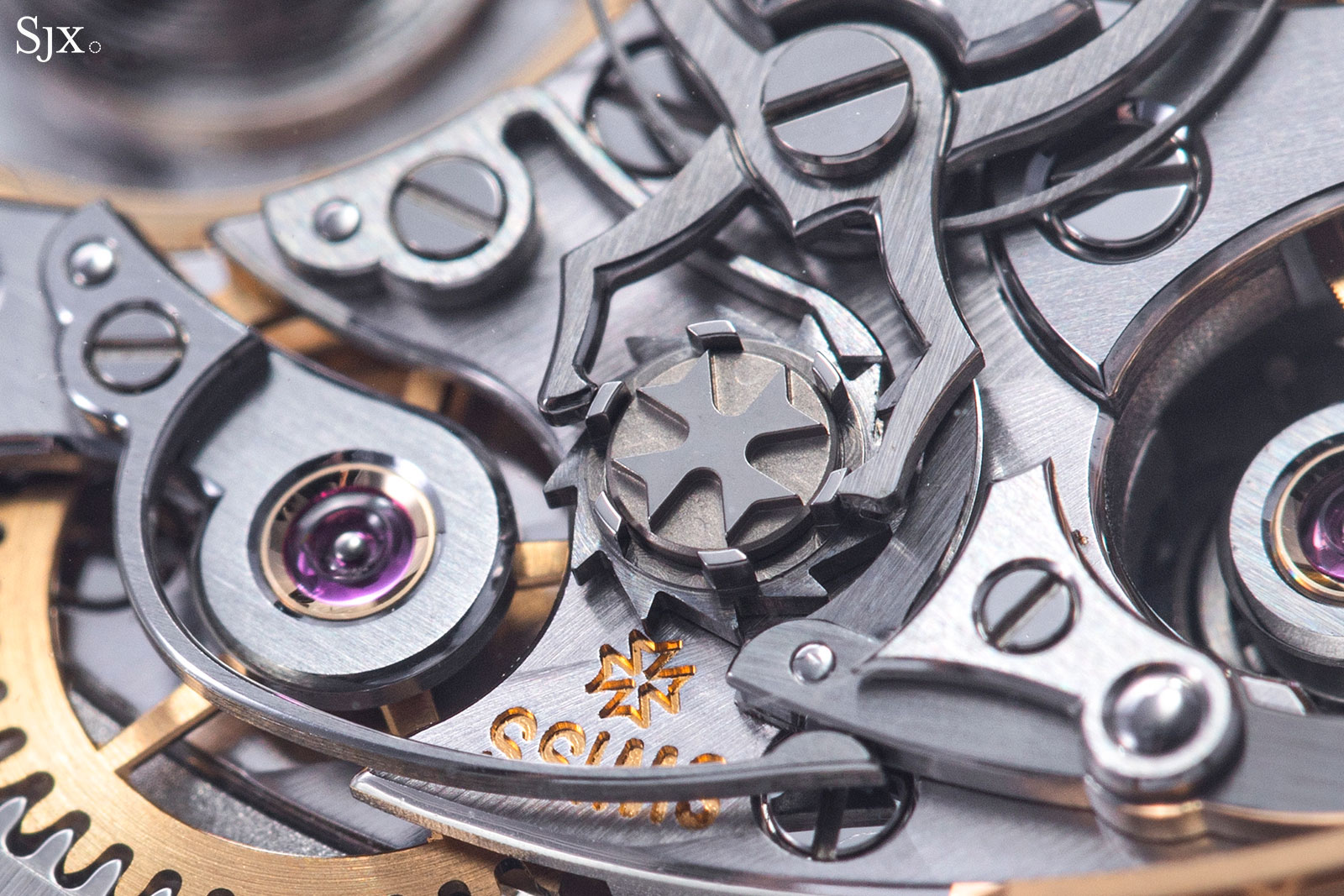
The Maltese cross is found on both column wheels – and notice the anglage on the fingers of the clamps
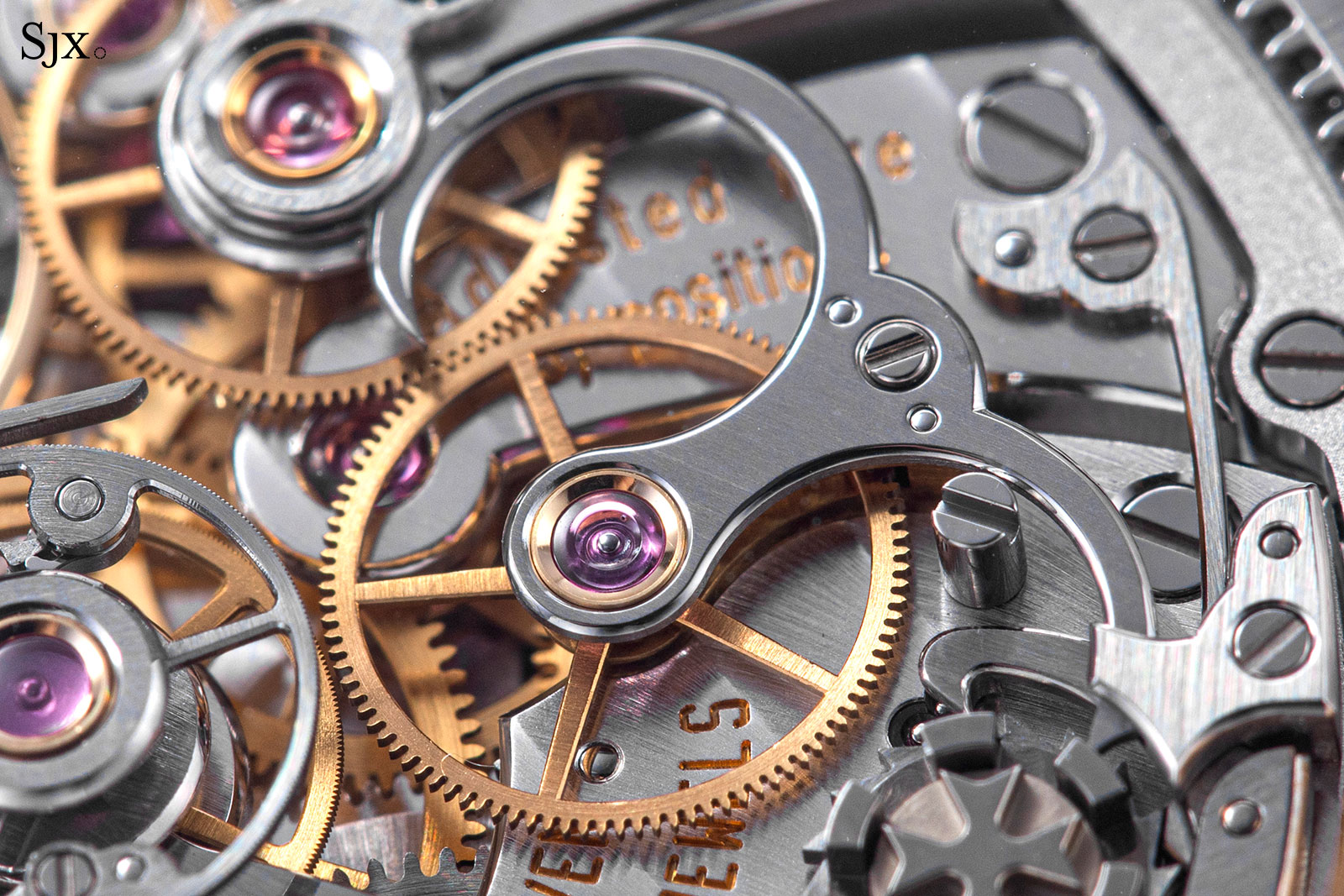
Concluding thoughts
The cal. 3500 is exceedingly impressive. And that alone is enough to elevate this to the hall of fame for split-seconds chronographs.
While the Traditionnelle split-seconds is certainly a top class watch, obtaining one might be a challenge, price notwithstanding, as only 15 were made and they are sold out (the last one available sold the week before this was published). Fortunately Vacheron Constantin has an accommodating custom-order workshop in the form of Les Cabinotiers, so the cal. 3500 can probably be obtained in another form.
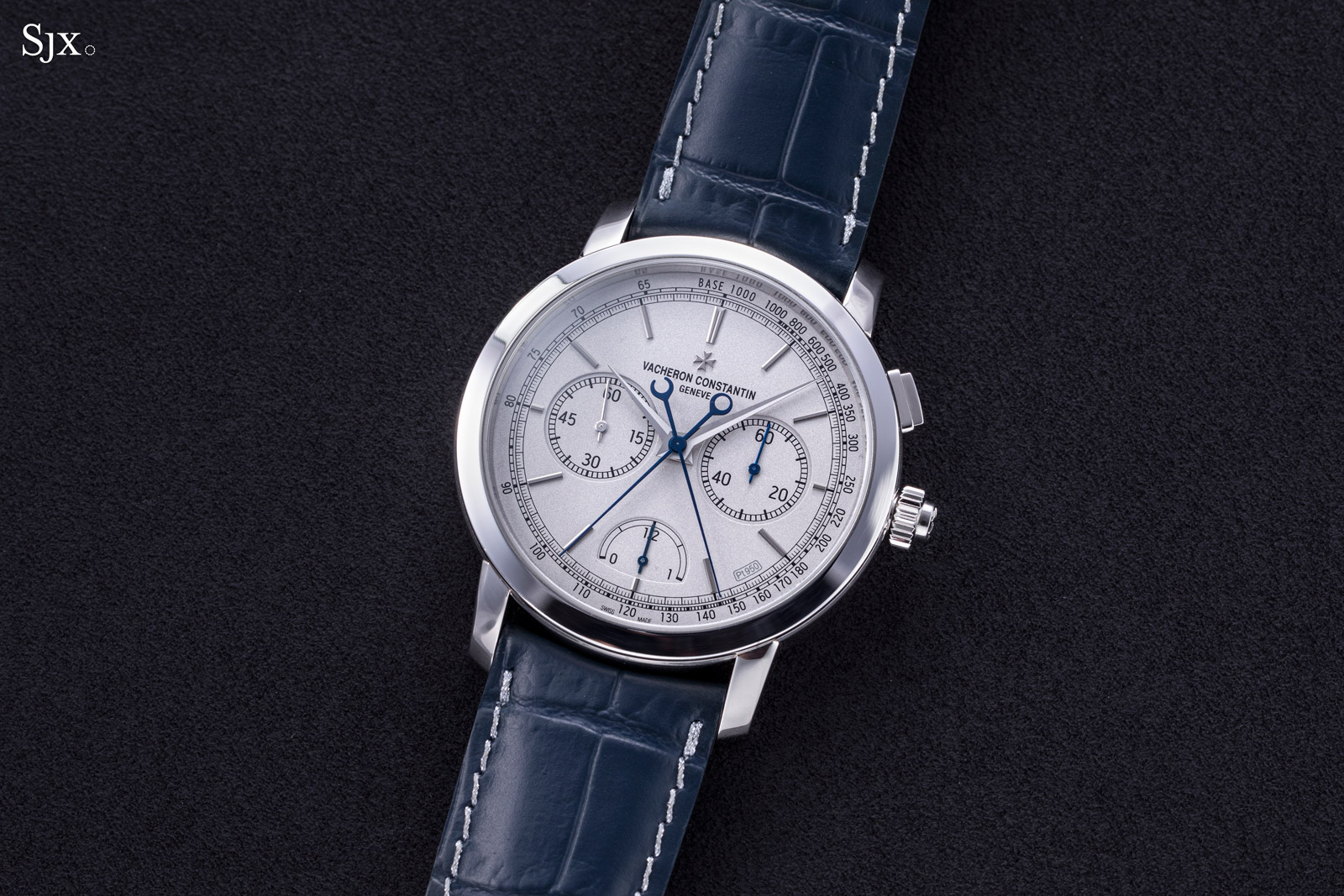
Key Facts and Price
Vacheron Constantin Traditionnelle Split-Seconds Chronograph Ultra-Thin Collection Excellence Platine
Ref. 5400T/000P-B637
Diameter: 42.5 mm
Height: 10.7 mm
Material: Platinum
Crystal: Sapphire
Water resistance: 30 m
Dial: Platinum with white gold applied numerals
Movement: Cal. 3500
Functions: Hours, minutes, seconds; mono-pusher, split-seconds chronograph; and power reserve indicator
Winding: Automatic
Frequency: 21,600 beats per hour (3 Hz)
Power reserve: 48 hours
Strap: Alligator with platinum folding clasp
Limited edition: 15 pieces
Availability: Only at boutiques
Price: Approximately US$300,000
For more, visit vacheronconstantin.com
Back to top.

